Just Bone Tired
Equine Bone Stress

\\'hen we think of fatigue our thoughtl> u·uall) turn to a decreased functional ubiJit) of such ti�>MICS as mu�ocle, or the central nenous system al> the result of prolonged exertion. Rarely do we ndate the term to bone, except perhaps in a �:�ubjcctivc sense, when we refer· to our·sclves as being "just bone tired." ln fact, this 'cry hard tis�ue due:. become fatigued after prolonged or unusual t�lres • and rna) then de' clop fatigue frartureb. For e>.ample, in man. there is a condit: \0 known a:. ":\larch fracture'' that occurs in militar} trainees after periods of forced man·hing. and is the result of bone fatigue. Thb situation is somewhat akin to the cracks that form in the materials of airplane wings Ull..! lo constant mo' ement, or in the ::�teel of buildings following earthquakes.
.\nyone who bas viewed fa�>t·action films or hor::-es at a full gallop must be impressed with the marked distortion that occurs in the lower leg at the lime the fool strikes the ground. During this time, leg bones unffergo deformation. and this phenomenon is known as a cycle. Thus. in a horse, mo"ing at full gallop, many C)cles occur in the leg bones. If rerlain limits are exceeded in terms of the number of cycle , or the degree of ·train. the bone becomes fatigued, and a fracture may occur. Fatigue fracture�> in horses usually take one of two forms: "buck shins" or saucer fractures.
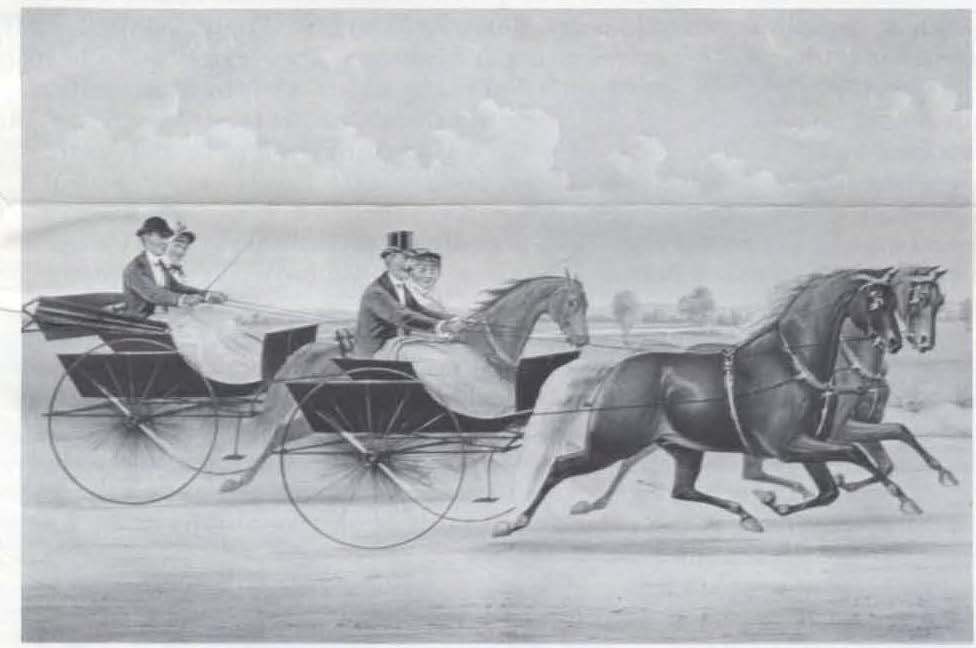
A �>lud) of fatigue fracture!) of the third metacarpal bone in horl:\es ia one aspect of the re�;carrh being conducted b) Dr. David 1'4un· namaker and associates at New Bolton Center. Aside from the basic information about bone that will be forthcoming from this study. it has great practical importance to those engaged in training and racing horses. It is estimated that e'enty percent of thoroughbred horses de\ elop fatigue fractures, usualI) early in their careers. Horses under two years old are prone to ..buck shins," while older animals usually exhibit saucer fractures. These two condition8 are estimated to result in the loss of 400,000 racing days annually. at the staggering cost of ten million dollars to the racing industry. And so, one goal of Dr. Nunnamaker's work i to find ways of diminishing the fatigue fracture problem.
(<"ontinuerl on page 4)



Newsmagazine of the School of Veterinary Medicine
. . . . . . . . . . . . . . . . . . . . . . . . . . . . . . . . . . . . . . . . . . . . . . . . . .
A Bru.�h rvith Webster Carts Currier and hcs, New York, 188l
Bellwether is published quarterly by the School of Veterinary Medicine at the University of Pennsylvania, in cooperation with the University of Pennsylvania Publications Office.
Editors:


Dr. John E. Martin
Stephanye Williams
Writers: Lisa Green
Helma Weeks
Dr. Josephine Deubler (Animal Crackers)
Designer: Two Twelve
Associates
Photographers: Diane Feltoon
On Not Seeing the Forest
We'd like to hear your praise, criticisms, or comments. Please address your correspondence to: Dr. John Martin. Editor. University of Pennsylvania.

School of Veterinary Medicine, 3800 Spruce Street, Philadelphia, PA 19104. or Stephanye Williams. Editor, University of Pennsylvania Publications Office, 410 Logan Hall, Philadelphia, PA 19104.
any of us share the common trait of taking the good things in Life for granted. This tendency is reflected in the way in which we react to many great advances in medical science. For example, we now treat the most serious bacterial infections with antibiotics or sulfonamides and expect recovery, yet less than a half-century ago such infections were fatal Not many years have passed since polio in youngsters and distemper in dogs were dreaded diseases, hut today both are under good control. It is part of human nature to simply not ��see the forest for the trees," and to accept great advances as our just due without any sense of appreciation for the years of dedicated work that made them possible.
Similarly, we who comprise the School of Veterinary Medicine community often appear to take for granted that we are one of the world's greatest veterinary schools. This attitude may result from a preoccupation with our own sphere of work to the extent that we do lose sight of the forest. Or, it may come from a lack of appreciation for how we achieved this prestigious position. In any event, a brief trip back into recent history may serve to establish a more realistic perspective.

Lynne Klunder Kressly New Bolton liaison: Catherine Larmore
None of these articles are to be reproduced in any form without the permission of the editors of Bellwether.
Advertising Sales: Stephanye Williams
1541019MIH!2
<Sl 1982 by the Trustees of the University of Pennsylvania.

As late as 1953, there was serious question as to whether this school could, or should, survive. The new dean, Dr. Mark W. Allam, asked a small group of faculty to meet one evening at his home. The dean posed a bottomline question: "Should we recommend to the trustees of the University that this school be phased-out?" There were a number of reasons for asking this shocking question. The physical plant was antiquated and in disrepair; operating funds were at poverty level and research funds were practically non-existent; the faculty was small, undeveloped, and in-bred; our standing within the University was that of a �'poor cousin" ;and we had no base of support among agricultural groups, breeding associations, kennel clubs, or the state government. It is not much of an exaggeration to say that, at that time, we could have put all of our friends in a telephone booth!
After some discussion it was decided that rather than recommending a phasing-out process, we should vigorously attack our deficiencies, and develop a plan that would launch the school towards academic excellence. Considering the magnitude of the problems, that was a brave, and perhaps, unrealistic decision. However, under the energetic and imaginative leadership of Dean Allam, and his successor, Dean Robert Marshak, with the help of many individuals and groups, the next three decades became the golden years for the School of Veterinary Medicine. We literally rose from the ashes, and today, we have achieved a level of academic excellence.
Now we have a choice as to how to treat our reputation. We can rest on our laurels, or emulate the many who brought us to this prestigious position and meet the present and future challenges. If we are to maintain our place and prepare for the future it is important for us to develop new facilities and continue to strengthen our faculty. This means creating a Basic Science and Library building in Philadelphia, and an isolation unit, intensive care facility, and biomechanics laboratory at New Bolton Cenler. As important as these will he, such facilities will have little meaning unless we provide for new professorships and endowed chairs in several disciplines.
A major undertaking? Yes. And its success will depend, in part, on demonstrating an attitude of pride and appreciation for what we have today, combined with a resolve to continue the work started almost thirty years ago. There are many, many ways to sbow displeasure, but few avenues for making known our positive feelings, on an individual basis. Since this is rarely practiced on a one-to-one basis, perhaps we need to set aside one or more days each academic year to express our good feelings in a more formal fashion. Appreciation Days? We could do worse, and the forest would not he quite so obscure.
Dr. John �:lartin, Vl\ID

Bellwether
Bellwether 2
About Bovine Leukemia...

In September 1981 Or. J. F. Ferrer and his associates • reported in the journal, Science, that infectious : bovine leukemia virus (BLV) is frequently present in • cow's milk. This finding generated immediately the • question of whether the presence of BLV in milk

• poses a public health hazard. Or. Ferrer has never • stated or implied that BLV infects human beings and.
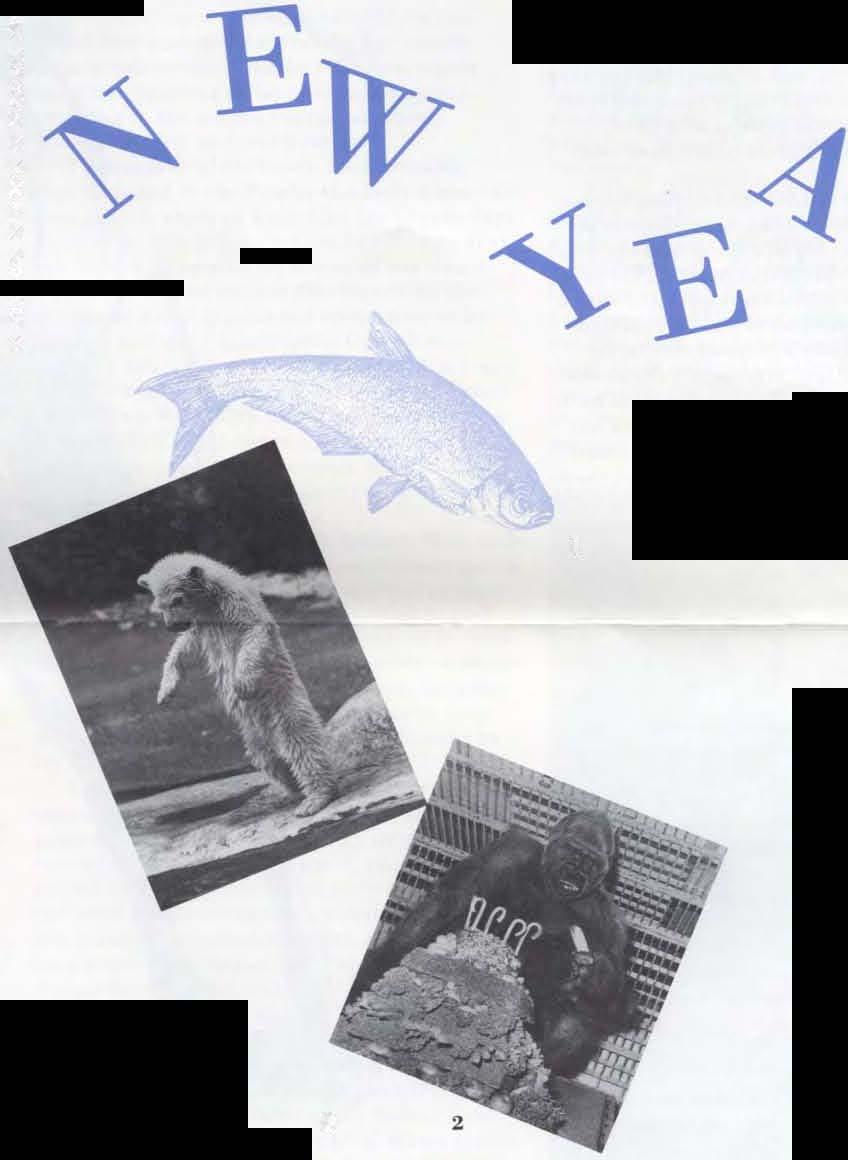
• in fact. in the report in Science he states that the

• available evidence fails to show that BLV infects
• humans or contributes to the causation of human
• leukemia. Dr. Ferrer does caution that studies to date
do not entirely rule out the possibility of human
• infection and that a definite answer to this question
• must await the development of a molecular probe
• which is fully representative of the BLV genome.
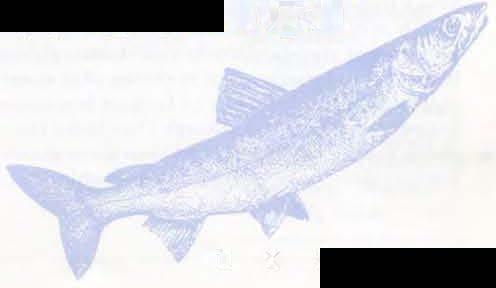
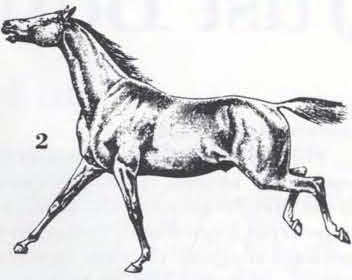
• Such a probe is necessary in order to thoroughly

•
• explore the possibility that segments of BLV genetic • material are present in the cells of human leukemia
• patients or of people exposed to BLV.
Dr. Ferrer states that while pasteurization apparently inactivates BLV particles, we do not know whether the genetic material of the virus, which is incorporated into infected milk cells, is inactivated at pasteurization temperatures.
Or. Ferrer and his colleagues have never recommended that people stop or curb their consumption of milk. While man has probably been drinking milk from BLV-infected cows for a very long time, human leukemia is a relatively rare disease. It is also important to take into account the enormous nutritional value derived from drinking milk and this appears to outweigh the very small possible risk. However. Or. Ferrer does believe that infants should not be fed raw milk from BLV-infected cows and suggests that people who may wish to drink raw milk can have tests done to make sure that their cows are uninfected.
Beyond the public health question, BLV infection (at least 20% of the American dairy cattle population is infected) is perhaps the greatest single threat to the large American cattle export business. Many countries do not allow the importation of BLVinfected cattle or of semen from infected bulls. Indeed, some countries even forbid importation of cattle testing negative for BLV. but which originate from herd where any level of infection is present. West Germany, a country with an official BLV eradication program, is already displacing the United States in the cattle export business.
These facts indicate that there is urgent need for an intensive research effort to settle, once and for all, the issue of whether or not BLV poses a potential threat to human health and to move ahead on the development of a full-scale eradication program. including the development of an effective vaccine against BLV infection. That development of such a vaccine is feasible has already been demonstrated by Dr. Ferrer in recent experiments at New Bolton Center.
Dr. Ferrer and his group are continuing their research in order to obtain more information on many important aspects of bovine leukemia including modes of transmission. methods of control and development of a vaccine. Bellwether will update this work as new data becomes available.
•
•••••••••••••••••••
• • • • • • • • • • • • • • •
:
Winler 1982 3 1 1 }' J HAPPY·' 9 9 8 from 8 1 9 8 2 1982 •••••••• Bellwether 1 9 8 2
Just Bone Tired
(ro11ti11uPdjrom page 1)



This re�earch has three major phases: to quantitate, int"it•o, the degree (amplitude) of strain that de'elops on the ::�urface of the third metacarpal bone during different gaits on turf and hard surfaces: to stud). in l'itro. the number of cycles that can be expected to result in fracture::; when staves of bone are exposed to \arying strain levels; and to study the histology of normal and abnormal bone obtained from horses of different age groups who ha'e undergone ' arying degrees of training and racing.
For the invivo studies on running horses, an instrument known as a stra inI{UU{{e is at· tached to the front leg of a hon>e and the strain data recorded by this is transmitted. through telemetry, to an oscillosC'opc equipped with a computer to anal}ze and store information. This part of the study addresses one fa(•tor responsible for fatigue fractures-the amount of strain placed on the third metacarpal bone.
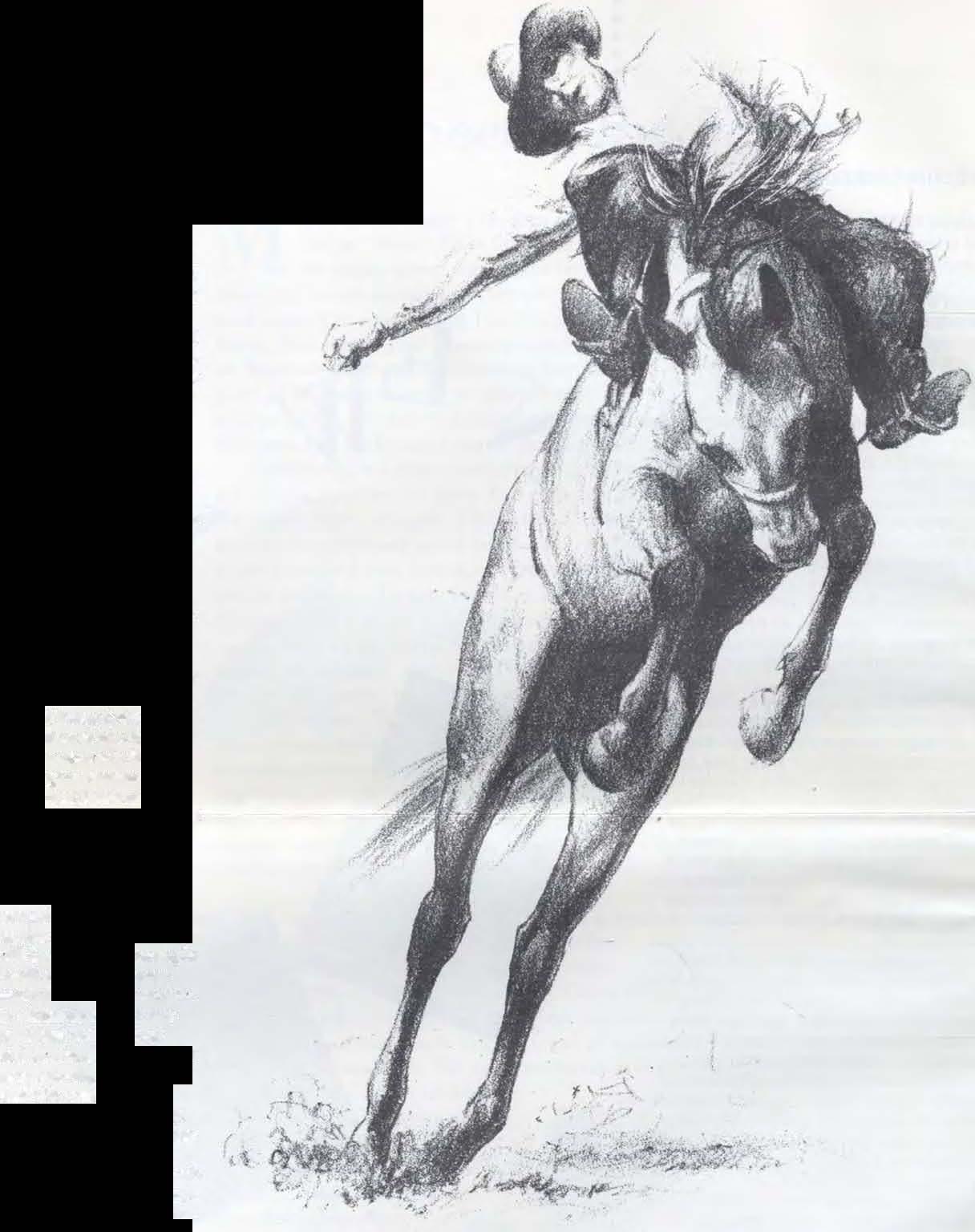
Since fatigue fractures are related to not only total strain range. but also to the number of t�cles, the in vitro phase of work will examine the latter factor. Sta"es of bone (obtajned from autops) material) are placed in a fatigue machine. One end of the bone sta' e is fixed while the free portion undergoes constant benrling (cycles). The amount of benrling will Lc "ithin the 10Lrain rangcsthat were measured in the intact animal. The object is to deter· mine the number of cycles that result in fatigue failure.
Histological work wiLJ be done on sped· mens of the third metacarpal bone obtained from horses destro)ed as the result of catastrophic injuries. This "' ill include microscopic e'amination of normal and abnormal bone (including stress fractures) obtained from se,. eraI catagories of horses: animals one or two years old that were trained but were never raced; tYto·year-olds that ha"e been raced; and hor!>eh in each ascending age group up to fh'e years of age. Thilo aspeC't of the research will pro' ide much-needed information about the relationship of age, training, and rat'ing to the stnH·ture of bone.
Dr. Nunnamaker believes that this research will allow us to make reasonably accurate predictions concerning the best methods of training for young horses with developing bones. Proper assessment of the number of cycles leading to failure, using racing strain amplitudes, might allow a trainer to condition a horse at strain le\ els that are acceptable, and then race the animal at higher strain amplitudes but restrict the number of C) cles to a safe range while the bone is maturing and remodeling. In this way the animal may pass through the era of risk without ,·aluable time being lost in a prolonged treatment program which may restrict training and racing. Com· parison. of standardbreds and thoroughbreds indit·ate that methods of Lrajning pia) some role in the development of fatigue fractures. Standardbreds, even though they train for much longer distances (and thus have many bone cycles), have a much lower incidence of
this type of fracture than thoroughbreds. Pre· sumably, this is related to the lower degree of strain on Standardbreds' bones.
Dr. Nunnamaker conducts his research in tbe C. Mahlon Kline Center for Orthopedic Researeh and Rehabilitation at New Bolton Center. This facility was conceived by the late
Dr. Jacques Jenn), a pioneer io orthopedic research in animals. It was Dr. Jenn) who first de, eloped the use of internal fixation for the treatment of fractures in horses. This approach is credited with sa'ing the lives of many horses that would have been destroyed otherwise. In earlier efforts, Dr. Jenn� used
Bellwether -1 f \. .. - .. . ., .. "
"...this very hard tissue does become fatigued after prolonged or unusual stress... "
the a"·ailahle human hardware \�ith a great deal of ·ucc·es�. Dr. ;\unnamal..er point out that hi:- present work is a continuation of Dr. Jenn)•• which developed the hasic techniques for fixatiotl in the horse. The pre�oent research is dircctcn at the development of improved hardware for the horse and of a stud) of how to use this to the best ad,antagc. To do this. the laboratory is equippe(J �ith machinef) to manufat·ture the equipment. To in,estigate the suitabilit) of 'ariou· matl'rialt-in treating fra<·tures in the li'ing animal �ould be 'er�· time-consuming, due to the limited a"ailabilit) of u:.able clinical materiaL To obviate this problem, Dr. Nunnamaker n�oes hone specimens obtained at autopsy. Bones arc cut to simulate fractures. fixation material�> are app· lied, and the specimen is then Rubjected to \ariou._ numbers of C} cles and degrees of stress. The in trument u ed for thi� procedure is an lnstron. and operates under carefull) con· trolled hydraulic pressure. The lnstron is able to accept whole legs, and can delher up to 1.000 c�clc�> per second. With thit- approach. Or. Nunnamaker is able to te"t the durability of various materials and to to determine opti· mum locations for fixation devices.
Another promising area of research is the u�>e of prC$Sure-sensili\e shoes for the diagnoo;;j<.; and treatment of lameneo;l\ in hurllt:to. Tht:t�t; .;hoc:- transmit.'ia radio, ""ci�ht·bearing data to a recorder so the in,e:.tigator <.·an determine the area..; of the foot that are bearing greater and lct-ser amounts of "eight. Or. 'unnamakcr il' quick to caution that. while this ted10ique offers some fascinating possibilities, there is much to be done in perfecting materials and te('hniques.
Or. '\unnamaker's work is an outstanding e�ample of comparati'e research. an area in which the chooJ of\eterinary Medicine i a recognized world leader. In faN. the accumu· lation of rooms in which the "ork i�o done i known as the Comparati\e Orthopedic Biome· chanica! Laboratory. The research is conducted in cooperation with a number of other facilities, including the Department of Orthopcdk:. of the School of Medicine of the Uni'ersity of PennS)lvania, the Veterans Administration, and Hanard University. The present location of the laboratory, \\'ithin the Kline Center. lea'es much to be desired. For exam· pie. the computer and testing mac·hinery are located in the same room, without adequate sound-deadening capabilities. Plans have been developed for a separate biomechanic laboratory, attached to the Kline Center, with a suitable functional arrangement of room , which will allow this important area of research to be developed to its fullest potential.



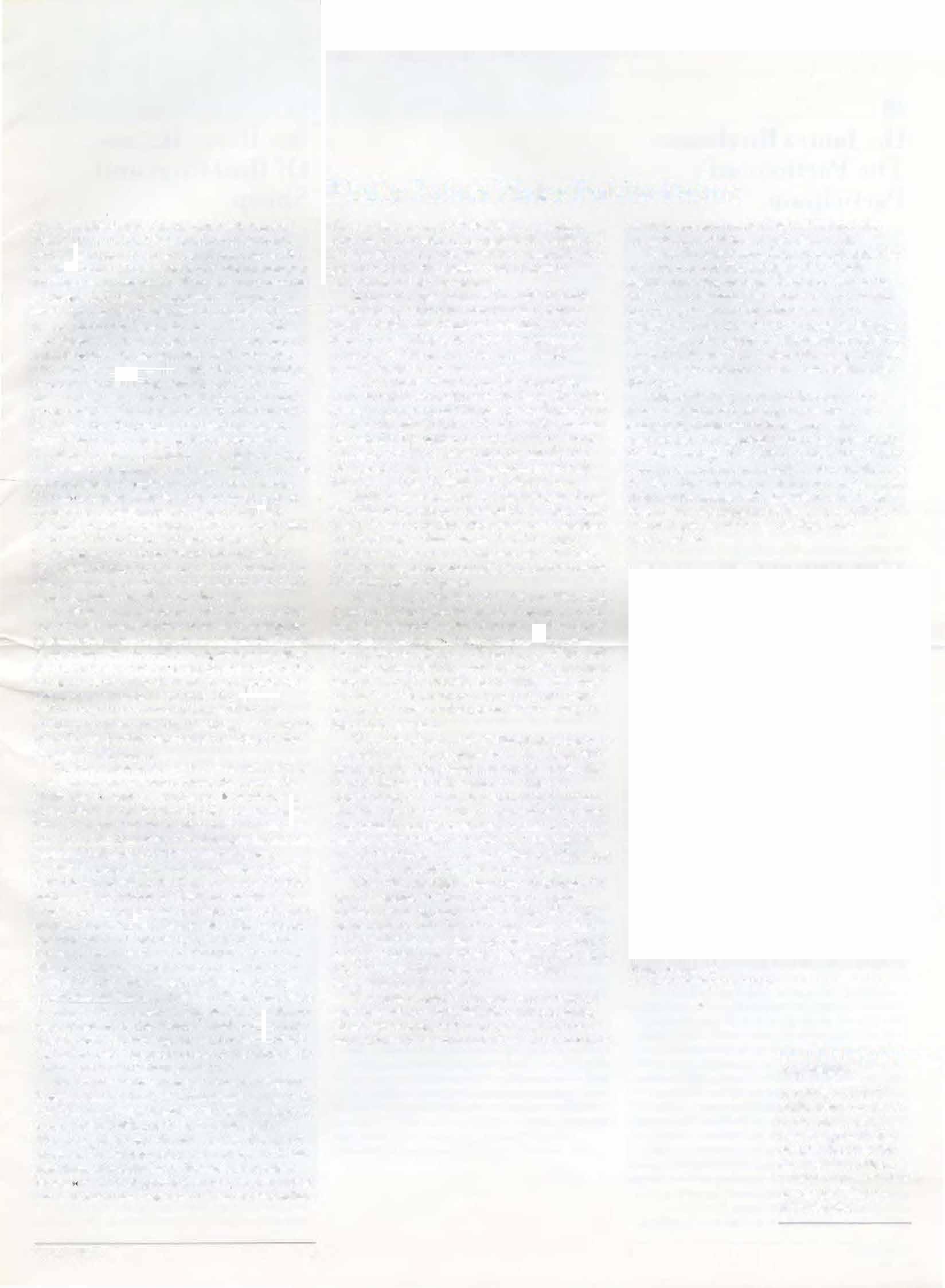
Dr. unnamaker occupies the prestigious Jacques Jenny Chair of Orthopedic Surgery. In addition to the publication of many papers, he i co-author (with Dr. G. E. Fackelman) of ManualoflnrernalFixation in the Horse. At present, Dr. Nunnamaker is involved with his colleague, Dr. Charles D. ewton, Associate Profes or of Orthopedic Surgery.in preparing the text for a new book on canine orthopedics.
Philly Polars Make Public Debut
This winter, as most Philadelphians fasten coats and turn coUars up against the chHl, two of the city's newer residents are naturaUy prepared to enjoy the bitter winds and tiny temperatures of the season.
Adamant opponents of the cold.in fact, might find positive inspiration for winter from a visit to the Philadelphia Zoo, where these two yearling polar bears are happily adapting to the season that most closely resembles their natural habitat.
The creamy white bears, both females, were donated to the Zoo by the Isaly Klondike Company, makers of Klondike Ice Cream Bars. At their public debut on October 25, one bear was named Klondike, in honor of her donor. The other will be named this month by the winner of a naming contest co-sponsored by the Zoo and the Philadelphia Daily News.
Both bears relocated to Philadelphia from New York homes: one arrived from the Bronx Zoo in New York City, the other from the Seneca Park Zoo in Rochester. But, like every polar bear, or ursus maririmus. the Philadelphia Zoo bears are descendents of Arctic bears of circumpolar regions.
According to Dr. Dietrich Schaaf, Mammals Curator at the Zoo, the physical characteristics of polar hears allow for their sunhal in modcrult: lcm!Jt:r�tturc:: • but the) are be t auited for chillier conditions. Thick layers of fat and a dense coat provide polar bears with exceUent protection agaiDBt cold. In addition,fur pads on the bears' feet serve a dual purpose: they act as insulation and provide solid footing in icy environments.
Since their arrival in Philadelphia,the two· year-old bears have grown to weigh about 250 pounds each. Each consumes an unusual mix· ture of three pounds mackerel, one·half pound hUet. two pounds zupreem (a commercial meat preparation), two pounds dogs food. two pounds carrots and apples, and four ounces peanut and 'itamin A-D oil. Their meal. except for the mackerel, is mixed together and served up once daily, in the afternoon.
Klondike and her friend are residents of a special section of Bear Country, a support facility which opened in November 1977. All Bear Country inhabitants enjoy indoor shelters, a cubbing and denning area, access ramps to upper enclosures, filter and pumping areas, a food preparation area, and television equipment and controls.
The polar bears' residence also includes a specially contructed, 300,000-gallon capacity fresh-water pool, and is surrounded by rock formations reconstructed of grinite, a concrete
mixture sprayed under high pressure onto mesh forms reinforced with steel rods.
Like all polar bears, Schaaf cautioned, the two bears at the Philadelphia Zoo "look cuddly, but they're not." Actually, he warns, "they're predictably dangerous." As a result, the young bears are handled and fed by remote control. The doors to their habitat are opened and closed by outside pullers, and they are fed indoors. "The indoor feeding," Schaaf explains, "is used as a control mechanism for the bears."
Although the pair at the Zoo may have mean dispositions, their personalities are masked by their beautiful, furry white appearance and playful behavior. Since their October arrival, Klondike and her friend have become one of the more popular attractions at the Zoo. And, as the temperature continues to drop, their natural affinity for the cold wiU insure that the playfuJ Philly polars will grow increasingly comfortable in their new environment.
Apologia
In the last issue of Bellwether, we inad· vertently omitted crediting the Philadelphia Zoo for the biographical information and photo for the story: "MaasaThe Big Boss."
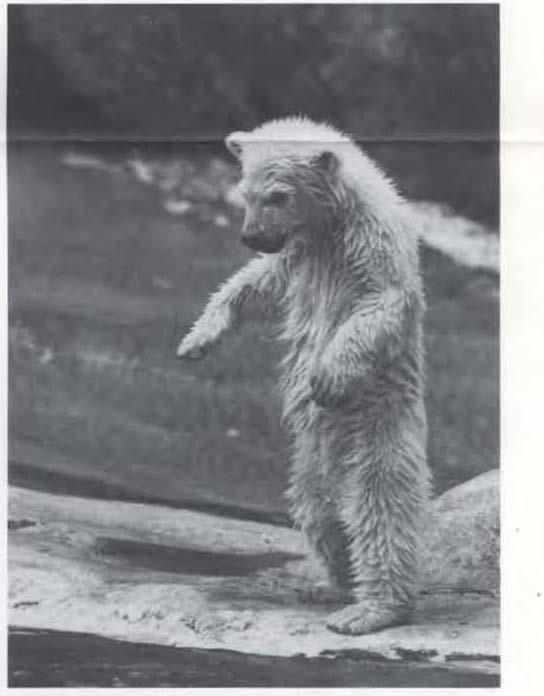
Winter 1982 5 ANIMAL PROFILE 1
• •••••••
Photo courre•y of Neu• York ZoologicalSociety.
Dr. James Buchanan The Participant's Participant
Dr. Buchanan traveled exten i"ely in Europe and in the United tales. examinin� 'eterinary hospitals to be abreast of the latct.l in technical ad,ances.
Being midwife to a Sl6.5 million project required a great measure of patience and a highly de,·elopcd sense of listening to the anticipated need'l of those who would \<\Orl in the hospital. As Dr. Buchanan put it. ·•The) all had input into the construction of this building, and the limits of structure and budget had to be re'iewed with each one."
As Professor of Medicine in the Depart· ment of Clinical Studies. Dr. Buchanan is an impret.she figure nith his dark wa') beard and alert eyes whirh often twinkle. lie smilet: readily and is 11till the allenthe listener,"hom nothing escapes. On any given da}, one mar sec Buchanan coming out of the heart station or pathology lab, followed by a co' e) of students intent!) listening to his explanation , theories. or ad' ice.

Mr. Barry Haines Of Buildings and Sheep

Now that the move to the new hospital (YHCP) has been completed, one would imagine that its principal creator could take a much deserved rest. Not so! Since locating himself in the magnificent new building, Dr. James Buchanan has returned to a full schedule of clinical work. writing. and teaching, plus responding to frequent requesho to act a� a ma'ler guide in conducting tour:; of the new building. He is also extremely interested in observing the functional capabilities of his creation, and in helping to work out any bugs that may develop.
From all reports, those who work in VHGP and those who bring their animals for care are mighty pleased. For Dr. Buchanan, the opening of the new hospital was the culmination of ten years of hard work in a field in which he had no previous training. When he came to the l'niversil) of Pennsylvania as a new graduate of .Michigan State ni\er ity in 1960, his intentions were to take a one-year residenC} in cardiology. Little did he know that he would remain for more than twenty years, and that aside from tackling scientific problems . he would devote a large portion of his time to such mundane items as choosing floor finishes, dog cages, and operating room cabinets.
But then this is not surprising. James W. Buchanan likes to be a participant and a prob· lem solver. He is a person who is curious about e"erything. His years at the University have been marked by active participation on many committees, a number of chairman hips. and ab the guiding spirit behind the new ho pital.

Dr. Buchanan's role in de' eloping a new hospital began rather innocently back in 1971 when he was appointed a member of the Hospital Planning Committee. Once the plans were on paper he became chairman of the Building Committee in 1975. Before he could say ..Please pass the bricks,'' he was totally immersed in design and construction prob· lems. Buchanan explained that this new phase in his career included •• learning to read design documents and working drawings and to pay attention to every little squiggle in blueprints." In preparation for the new building, Bellwether
Buchanan also lo\e:. music. anci jn keeping with his personality this love is demonstrated as a participant. Hi music took him to the Rose Bowl as a percussionist in the Michigan tate Unhersitr Marching Band. �ow musicmaking i at home nith his wife and four children (who each plar an in trument), or in t.•hurch. where he sing in a choir. lie lo,es the outdoors and is scoutmaster in his son's Bo} Scout troop. During winter, the Buchanans take to the ski ::.lope� of Pennsylvania. or to Colorado if Lime permits.
Buchanan is also an accomplished photog· rapher as the picture� on his"all will attest. and this hobb} hai> led him to de"i�ing and preparing new leaching aids in veterinaq medicine, such as 16 mm films on heart surgery in dogs. He has a darkroom at home but has used it jnfrequently during the la::.t few years because of his preoc<'upation "ith the new hospital.


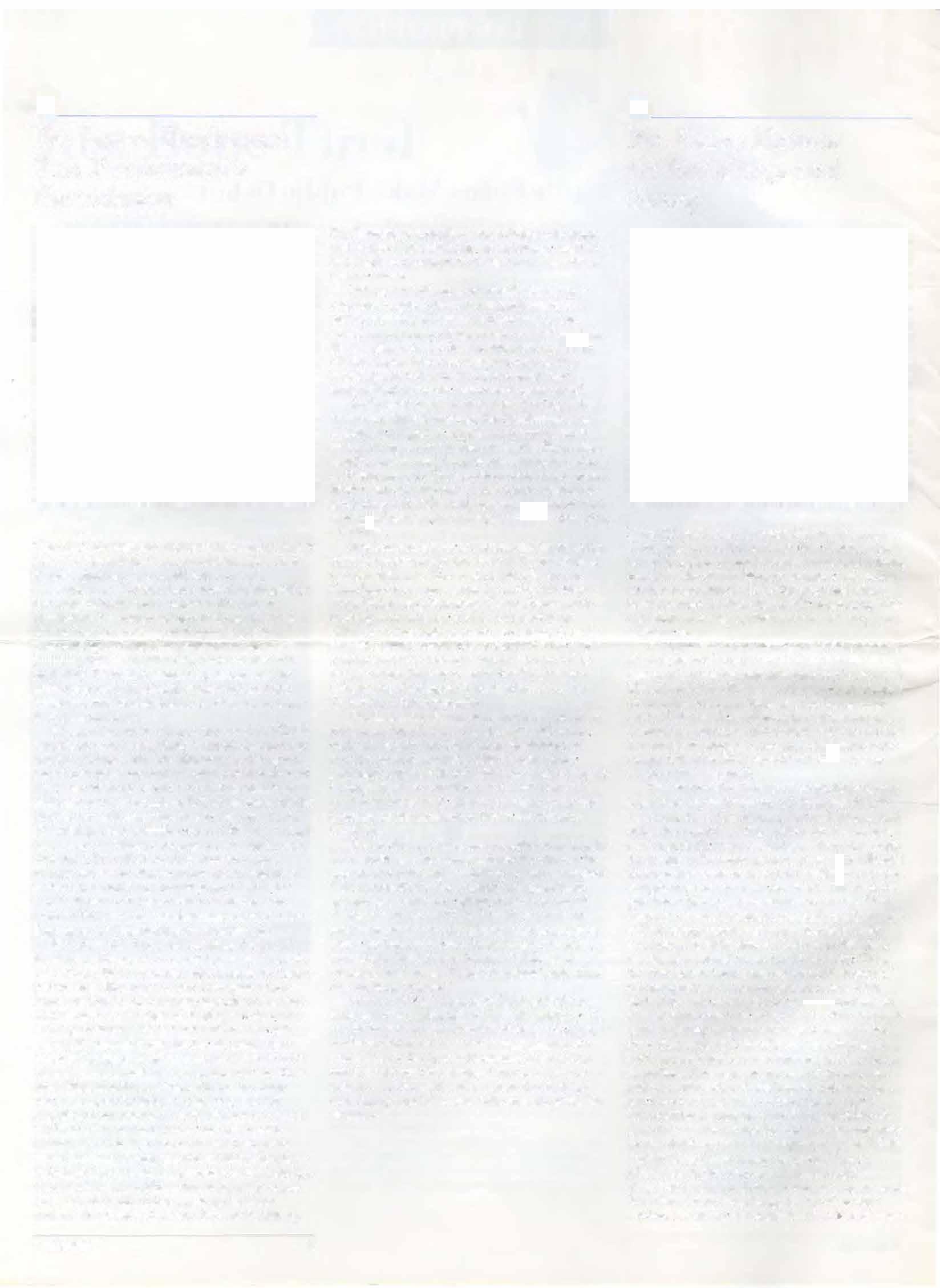
Dr. Buchanan, who now speaks from hand:.on experience, has some advice for those \<\hO are contemplating building a new hospital. •· Do research; analyze plans; ask questions; pend some time lra,eling: inform yourseli about materials and finishes. If you hire an architect, look for a local one, and preferablr one \\ho bas done 'eterioary hospitals. Also. attend the Veterinary Design Conference which is held annually in Cleveland, and take the architect along."
From a D.\.\1.. degree at Michigan State university to a profe sorship and specialt) in cardiology at the Lnhersity of Pennsyh ania. to the creation of an outstanding facility for animal care, Dr. James Buchanan moves forward, consistently reinforcing the merits of being a participant and helping the field of 'eterinary medicine and this school realize its dreams.
ft "ould not be at all surprisin� to encounter Barrr Haines rushing about �e\\ Bolton Center \\ith a pipe \<\rench in one hand and a l'hecp t·rook in the other. Barry's primar) job at the center is maintenance of the physit•al plant, but his heart it' with the wooll) <'reatures. The mention of sheep ignites an immediate gleam in his e)eS.

,h building adminislrator for "few Bolton Center. Barry is responsible for the maintenaflce of seventy structures ranging from the historical Allam House to the newly-dedicated George D. Widener Hospital for Large Anj. male:;. This in"oh es aiJ routine maintenance. including operating efriciency and the eternal homeowner plague" such as leak} faucets and dogged drain:.. IIit- expertise in thi t}pe of work comes naturally.
The senior Mr. Haines. Barry's father. was a builder for forty years. We imagine that it was from him that Barry acquired his appreciation for working"ith well-built "tructures, and especiall) farm buildings. Barry has what he terms '·a five-year program" for ew Bolton Center, designed to bring all buildings up to a simple maintenance level, which "ill require considerable repair to some :)lructurcs. With the cost of construction material caught in the inflationar) spiral, estimates for this work total close to $800,000. At this time $650,000 has been recehcd from the Unhcrsit). Thus far two barns have been reno\atcd as part or the program to impro'e patient care. This included coO\erting wooden tall e<'lions to cinder block and co,ering them with an epO'<) paint for eas) maintenance and disease control. The asphalt Cloors have been replaced with cement and a new drain system has been installed. These bams are over fifteen years old and, like other buildings of this-.intage, ha' e arrived at a point where �orne major impro'ement"' are needed. Thi� includes the pole barn� used in the leulemia re.,earch pro· gram wruch arc no'" undergoing repair. While tlpervising these major projects, Barry's phone seems to ring continuously with requests for immediate senice on minor problems involving plumbing, fault) electrical soclets. or bulk) air conditionert-. :\1r. Haines
6
hat- hscmbled an excellent group of craftsmen to take care of these \ariou tasks, but is still underhtaffed.

Now about the sheep crook. E\en though Barry was raised in a Philadelphia suburb (Yeadon) he alwa�s had a yen for agricultural acth·itic". Thi led him to Penn tale Lnh'er!:>it) where he graduated in 1974 with a B.S. dc�rce in \nimal Science. Folio"ing graduation. he became Assistant Herdsman of heep Facilitie),. at Penn State in 1978, and was respon!>iblcfor managjng three purebred flockR and one commercial floc!... The \\Ork included research studies.feed mi�ing. super\ision of technical service"' and Rludent employees, operation of mnchiner), and general maintenance.

Thh background e�plains Barr)'s ec.tatic reaction "'hen a new rlock of heep recenll> arrived at :\ew Bolton Center a;, part of the program to expand teaching in small ruminant medicine. A new sheep hhcd wa;, built and a floc:-k of )earlings was purchased from Penn Stale University. To t'omplete the flock, a highquality Dorset ram was donated by Dr. and Mrs. Robert Herr of Nix Besser Farm in Narvon, Penns} h ania. The sheep project is under the professional supeni�ion of Dr. Colin John· atone. 1\t;sistnnl Profes!;OrofPurat>itolog>.who bas istcd by Dr. usan Donof(hue, a faculty member of the Section of �utrition. A natural com.equence of events wa:�the designation of Barr) Haines a�shepherd.
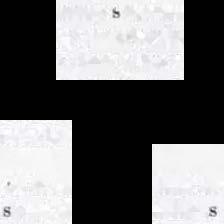
'1r. llaine is married and has a son, Matthew. As might be expected, Barry's interests run to outdoor activities such as hunting, fishing, ar<·her}. boating. gardening and ammunition reloading. And, of coun.e. to sheep!
Helen Linwood Keeping Track of History
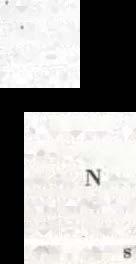


Would you like to know how many ·tudents graduated in 1902, or how many matriculated len years later? You may think that a Jot of �;earching would be invohed to get this information. Wrong. Just ask Helen Linwood and she'll provide the answers in less than a minute.

Helen Linwood, kno�n to man} alumni as Helen Jarrett, is the Assi tant for Admission and Audemic Affairs at the School of Veterinar} \tedicine, and she keeps the e and other 'itaJ statistics at her fingertips.
Her Litle wasn't always that formal.When Helen fjrst came to work at the school in 1949, to succeed Miss Edna Wesley Tuteur, who had been chief clerk for over fort} years, she was senior clerk. Miss Tuteur stayed about a year to guide Helen into the complex duties of the chief clerk. Back then, the office was in the old quadrangle building near the arch and the chief clerk's desk stood in the bay window so a sharp eye could he kept on everyone and everything.
The school was not as large as it is today, the office not only handled admissions, hut also prepared the budget, maintained personnel recordt., and hired the clerical staff.As the school grew and the student bod) and the facuh) expanded,Helen' dutie:1 changed; her office no longer prepares the budget or handles per·onnel recordt.. Admis$ions work has grown so that it now occupies much of Helen's and the staffs time. As supenisor of one of the nerve centers of the school, Helen Linwood's duties are anything but routine. Any given day may bring requests for information on a new survey being conducted by the dean's office, explanation of a new Univer'ity policy, or providing historical information about a former facult} member.
Her office, located since 1964 in the Rosenthal BuiJdjng, is a beehj\e of acti\·ity as Helen dispatches her manv duties. One of the most importan� particularly from a student point of view, is managing admissions and insuring that all letters, transcripts, and forms arrhe promptly for submission to the admis· sion:;committee. Imagine the organization and attention to detail required to keep track of the more than 700 files assembled by Helen from ovember to May each year. Once that process is completed, Helen still continues to work sinceshe is often called upon to arrange coun eling meetings for rejected applicants to e"plore late admittance possibilities.
On lop of all of that, Helen keeps two very special hibtorical records. The Matriculation Book, a thick, old-fashioned journal reminist•ent of another era. and the Graduate Book. When clas es were smaller, each student would c.-ome to the office to sign the \1atriculation Book. "Obviously." Helen explain , "with a class of 109 the line would be too long, and this tradition is no longer followed." Instead, Helen enters the name of each student. The
Graduate Book is a 152-page \Oiume, begun in 1887 when the chief clerk entered the names of the first graduating class... It's the history of the �;chool in a nutshell," Helen proudly stated as she pointed out the old-fashioned penmanship of one of her predecessors. The class of 1982 will hegjn Volume II and Helen had to l:!Carch for a suitable book.
Helen lo\eS her work and has a special affection for the Unhersity because of her undergraduate days here. "I had so much fun when I went to school on this campus," she reminisced. After receiving a Bachelor of Science degree from the School of Education, she taught for a few years. and during summer vacations, worked in the Zoology department. When Helen learned of the job opening for senior clerk at the '"eterinary school she relurned to Penn.
The school has pla}ed an important part in her personal life for it \\aS here that she met her hut>band, Norman. while she was working at the front desk. At that time, be was a detective lieutenant with the Philadelphia Police Department, on leave of absence to do investigative work at the University.
Helen and orman live in orristown, and until last June operated an antique shop in their SJJun: limt:. '"We:: lu�t:d it, but wt: did not have the time to go to tbe auction and sale to scout for new pieces,"she said. "It has become \ery hard to find quality pieces. You ha,•e to spend many hours at auction�> and may come away with only one item."
Antiques are still an important part of their lives, although in a different form. Norman has a great collection of newspapers, dating back to colonial times and spanning the history and development of this country. "One of the papers we ha,·e has a story in which Mrs. O'J.cary claims that it was not her cow which started the Chicago fire h) kicking over the kerosene lamp," Helen chuckled. "'I start reading the stories and history comes alive, it's so rnuch more interesting than reading a history book." Helen has plenty of opportunity to reli"e the past as they index the entire collection. Helen explained that the old papers have to be handled carefull). especially those after 1830 because they were printed on cellulosebased paper rather than rag paper. They ha'e to be stored flat and in the dark to prevent deterioration.
fielen likes to get to work early, to have a quiet hour away from the ringing phones, to get a good start on her daily work. But even at eight o'clock the phones are ringing. "People think we are here at all hours," she laughed. Her good spirits help her keep calm in a demanding, heeticjob. Right now it's time to complete the admission files for the next class. oon their names will be entered in the Matriculation Book, and Volume II of the Graduate Book will he started. A set of historical school records, which have been part of Helen Linwood's life for more than thirty years. wiU be continued.
Winter 1982 7
Oceans, inhabited b) a multitude of animals, cover three-fourths of the earth, yet little is known about the habit, life cycles, and diseaseH of ocean dwellers.
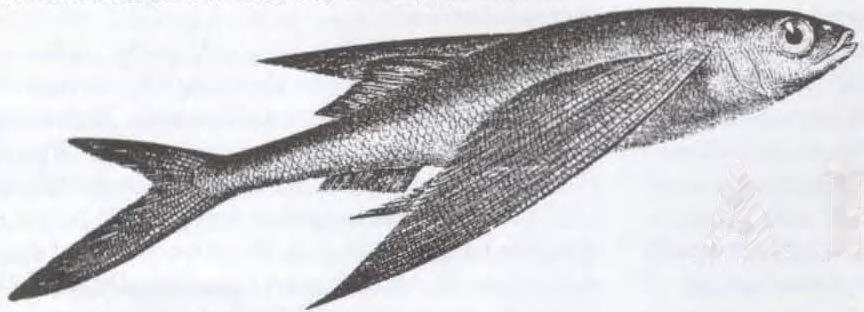
Until recently, marine animal study was left to the care of biologists and aquaculturists. This haA changed ah it has been recognized that, through the application of traditional skills and knowledge, veterinarians can contribute much to the care and study of marine animals. Veterinary medicine took to the water at Woods Hole, Mass., in 1976, when marine biologist!!, aquaculturists, and veterinarians met to formulate a program for Aquatic Veterinary Medicine which relied on a number of disciplines to study and maintain the well-being of marine animals and their en'ironment. The program was named Aquavel.
The School of Veterinary Medicine at the University of Pennsylvania, together with the ew York College of Veterinary Medicine at Cornell University, provided impetu. and sponsorship for Aquavet, furnishing matching grants to the initial funding received from the New York Sea Grant Institute. From its inception, the program has been under the leadership of Dr. Donald A. Abt, Director, and Dr. Charles G. Rickard, Associate Director Dr. Abt is A�Rociate Dean and Professor of Epidemiology and Biostatistics at the School of Veterinary Medicine, University of Pennsyhania. Dr. Rickard is Associate Dean and Professor of Pathology at the New York State College of Veterinary Medicine. To make the program a reality, the cooperation of other institutions was needed. The Marine Biolog) Laboratory, the Wood Hole Oceanographic Institution, and the Northwest Fishery of the National Marine Fishery Service opened their facilitieh on Cape Cod and helped to make the program a success.
Participants in the four-week course, !!elected annually on a competili\e hasis, now number thirty-two per year. Admissions committees at Penn and Cornell select eight students each from the two schools. The other l!ixteen places are filled by Drs. Abt and Rickard from applications received from other schools and graduate 'eterinarians. Participant:s ha\C come from twenty other schools representing almost as many stales. Graduate veterinarians, participating in the program, are eligible for continuing education credits.
In May 1977 the first sixteen students

arrived at Woodh Hole to participate in Aquavet. Since then, students, veterinarians, and other profeRsionals, 145 in all, ha'e completed the course Introduction to Aquatic Veterinary Medicine. It is a demanding cour8e of 8tudy, which explores all aspects of marine life. Lecture topics range from ecology to anatomy, to the study of disease conditions and their prevention and treatment. Classes, field trips, seminar , and laboratory sessions are held six days a week, beginning at 8 a.m..
Discussions often continue into the night at the Swope Center of Marine Biolog} Laborator} where students and facult) li�e. This en\ironment allows interaction between program participants and resident and ' i11iting scienti!'ts.
\qua'et is interdisciplinar) and it takes about fift)' researchers and teachers to co'cr the �ast subject. These experts come from the nation's leading universities, rescan·h facilities, and industry. "We give a smorga11board to those who are interested in bio-medicine," Dr. Abt said, "we let them taste what's available. Aquavet is a frontier in veterinary medic·ine. The biologist has studied what's there, biomedicine goes to sec what's there and how best to interact so as to prevent ancl eliminate disea es."
The course begins with the stud)' of salt marsh ecologies, inter-tidal zones, and offshore areas. tudents appl) the tcchni<lut•s of comparati\e anatom)' and ph)'siology to compare and contrast aquatic animals with those spedes commonl)' encountered b) 'eterinarians. The) explore the relationship between the marine animal and its habitat and learn how this en'ironment ma) influence the interaction between disease-producing agents and the animal.
They arc encouraged to appl) the veterinary ' iewpoint to problems encouutcred in the rearing of water-dwelling animals in aquarulture systems. Drawing on their knowledge of epidemiology, parasitology, gcnctirs, nutrition, toxicology, and other fields, students seck solutions to the problem:s which afflkt marine animals and their habitat. Discuses are studied, and compared with those found in land animals. The animals C'-amincd var) greall). The) may be starfish or marint • mammals, �nails, mussels, or birds. Their interaction und role in the food chain and erOH)Stem are investigated and often used us models for more detailed disease stud).
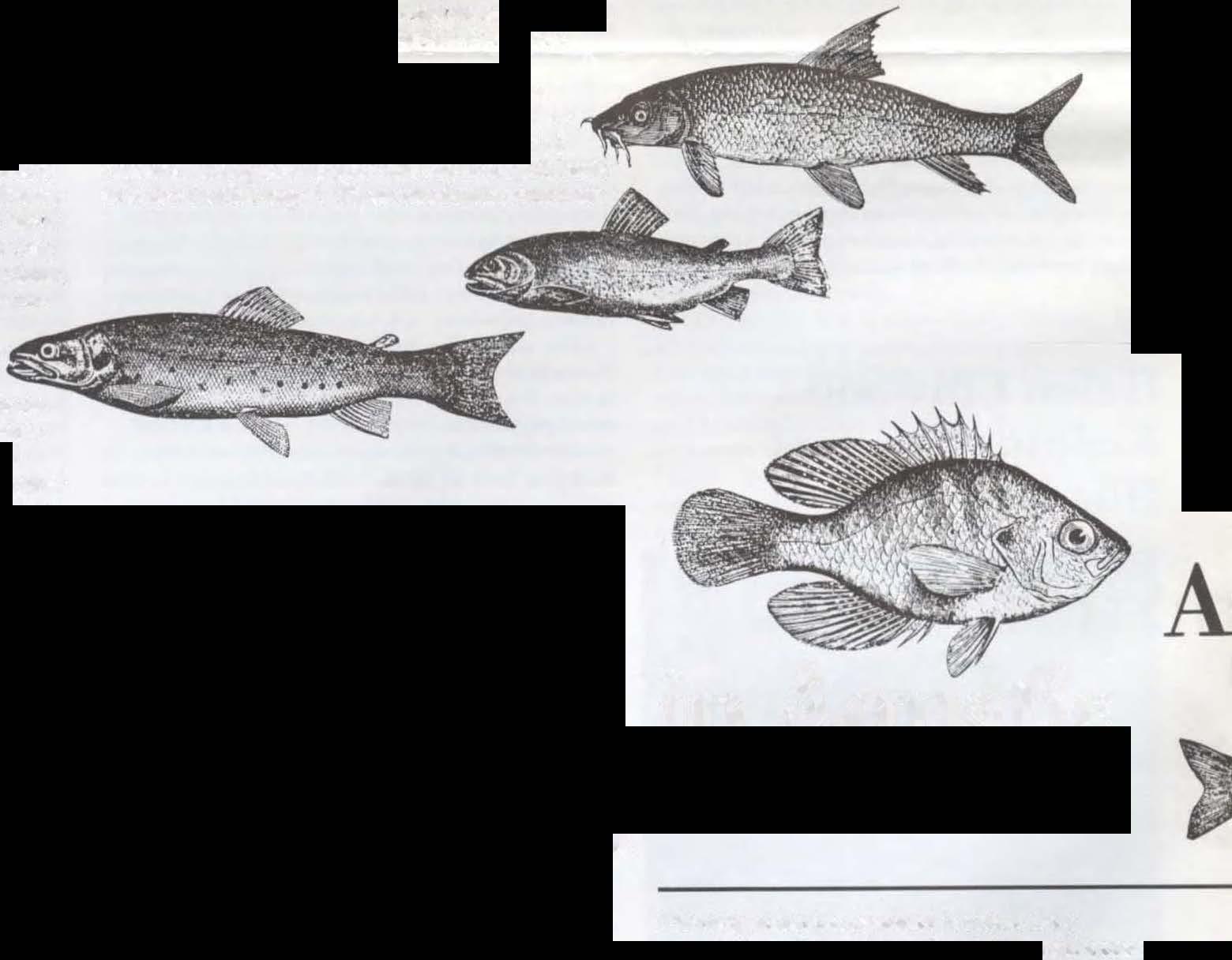
Following the introdu('tory <'ourse, a limited number of students arc :selected to pursue an additional eight-week period of research designed to provide an in-depth look at a particular topic. The�e �tudents continue
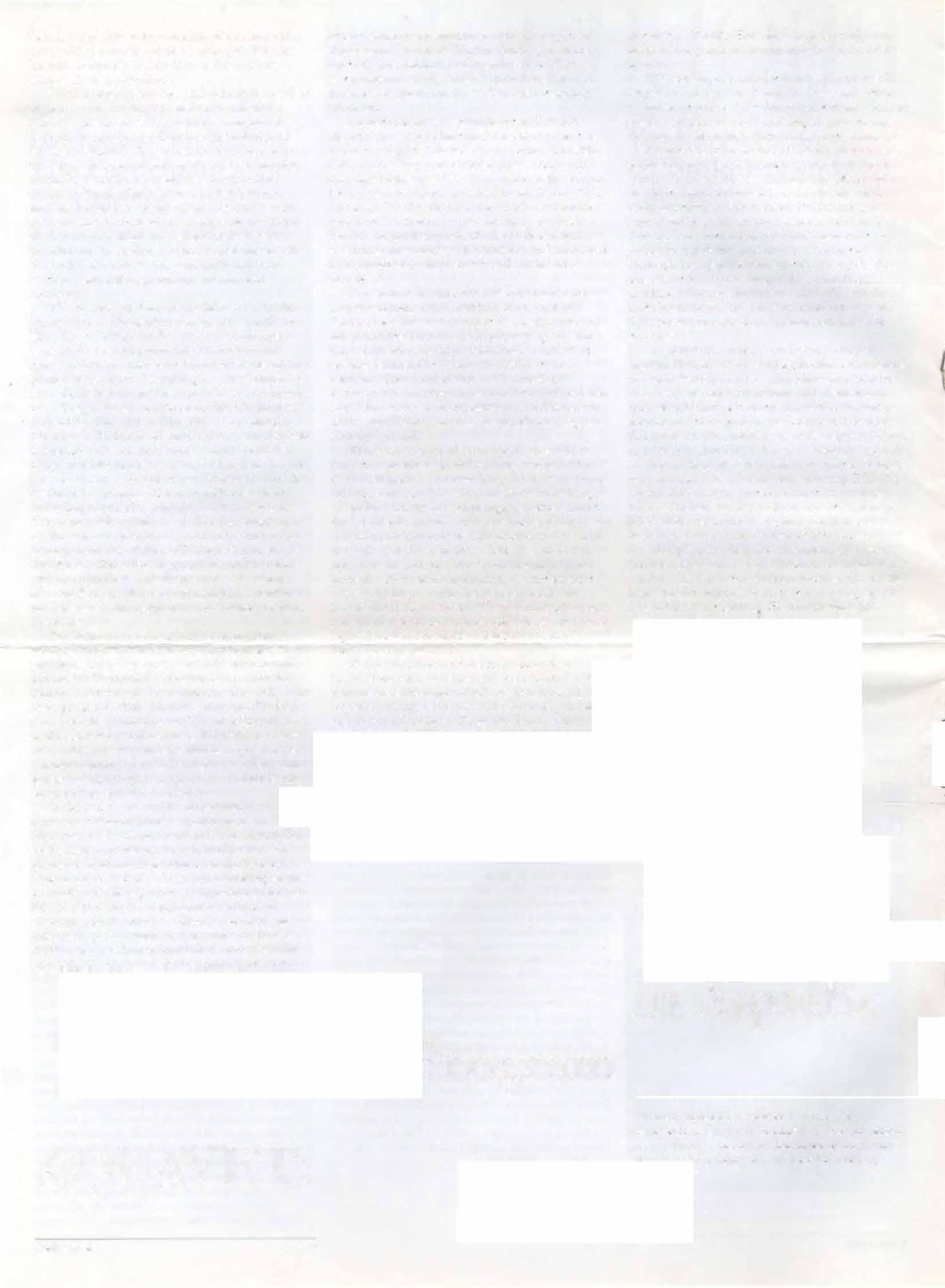
to work at Woods Bole or begin to study at a cooperating institution in another part of the country.

The concept of Aqua'et i:s important with respect to future food suppl). Fish are a �ital resource, )et the) ha\C been hanested "'ithout much thought to repleni..,hing or protecting the supply. :\Ian has altered the en' ironment of the once fertile coastal fishing grounds by carelessly dumping indmtrial wastes into the waters of rivers, lakes, and occan:s. Man) species ha'e been pur8ued so relentlessly that their sun ivai is threatenecl. Pollution has wiped out murine animal populations or has fostered an em ironment which can onI) support a Rmall siell)' populatiou. Aqua, et, through the applil•ation of \Ctcrinan medicine, ma) be able to help raise a health} marine animal population. Already solutions ha\e been found to combat some diseases of fish, raised in aqua<·ulturc conditions, with �arcinc.;.
Aqua\Ct is not onI) \itaIto the role of marine life as a food source, it also contribute:to establishing marine animal.; as models for the study of body function� and disease control. Much that i:s kno\\n about the transmission of nenc-impulscs was learned through the study of the giant a'on of the squid, begun in 1933. Yet, for all of the years that the squid has been studied, scientists have ne\cr found a wa) to rai�e it in a laboratory setting. Ideally, a researcher :should ha\c a colon) of animal�; from a known strain, sud1 as are a' ailable in laboratory mice and rats, but too I ittlc is known about marine animals' life cycles, breeding habits, and development pha�e� to permit systematic reproduction of laboratory strain$. \n 1\qua'ct 1otudent tackled the problem and attempted to rai:se 'Cr) young squid in a lahoratoq ,..ettinl:(. lie found that the
AQUAVET:

A Program
in Aquatic
Participation in Aquat•et is open, on a competitit•e basi.�. to .�tudNlUfrom all t•eterinary.�choo/.'1, and tograduate t•eterinarians. Further information may UP obtained by contacting:

Bellu•ether
8
)
)oun� animals lat·ked the ability to detect the boundaric), of the aquaria U!'ed in a laborator) setting, unci c·ontinually humped into the walls. This t·ausNI abra!'iom whit·h hec·ame infcc·tccl and c·aused the death of the )oung squict The J'tudent was able to reduce the morality rate somewhat hy t'O\ering the wall!-� of tlw actuaria with opaque material, but the problem il' still nut sohcd and much more rcscan•h remain:-; to he done. "We ha\c to dcH·Iop a bod) of knowledge, and this ha�; to he con!'ilantl) c·,pundcd," Or. Abt explained, while tt·llin� th<· :-;quid stor).
The work with murine animals has not only improq•d the· under:;tanding of :;uC'h \ ital function-. a... nc•urotransmissions, it also has helped to prO\ ide insight into the mechani:.m of ft•rtilization and <'ell de,elopment. Sea un•hin rescarC'h ha11 c·ontributed greatly to the hu...ic· knowledge of sperm-egg interaction and ha:- prcneel relt•\ ant to cant•cr research and fer· tilit) rc·�ulation.
Ancl the e'pansion of knowledge continue:;. Last )Car, at the year-around laboratory for the :-;tudcnt of cli:-;ea!'el'\ of marine animals, cstublisht•d under Aqua\'Ct, fhc pre\ iousl) uniclt•ntificd dist'll!'Cl'l of marine animal!-� were disc·ovc•rt'fl, a drop in the bucket compared to the work that needs to be done. Take for example, t•iguatera poisoning, a di1-1case more common in warmer dimates, whid1 is c·on· tractNI from eating fish whid1 arc carrying the toxin. Although it docs not affect the fish, it c·an ha\e scriou" const•qucnccs for those �ho <·on:-unH• the fi:-h. It il' a �real public health problem and :-;cit•nce ha� � et to find a way of
iclcntif)ing the toxin <'arricr�. A bit doser to Pcnnsy h ania, another problem has been Red Tide, a parasiti<' di�case which caused the clo· sure of many Eastern optcr and clam bed11. Ciguatera and Red Tide arejust two examples of the mysteries which need to be unra\clcd as man looks to the oceans a11 a continuing food l'lour<·e. Aqua\et will play a' ital role in Moh·ing tho:;e and man} other problems.
Many of Aquavet's partic:ipantl' ha"c graduated. Some are pursuing further studies in the field, some arc doin� research, and others arc using the skills and knowledge gained at Woods Hole in pri,·ate practi<·c. Dr. Aht tells of two graduates who have de,oted their practic·e to exotic animals and he enviMionM an increas· ing demand for veterinarian!\ interested in aquatic animals at' food source�o�, laboratory animals, or as companion animals.
To suppl) this demand, plam arc being made to introduce cour�o�cs on marine animal�; in the regular curriculum of the School of Veterinar) Medicine. Thi!-1 will broaden the ba11e e�;tahlished by Aqua\.·ct, and perpetuate knowledge in a specialty of great importance, if marine animals arc to continue their ' ital role in meeting the world'� needs for qualit) food supplic11.
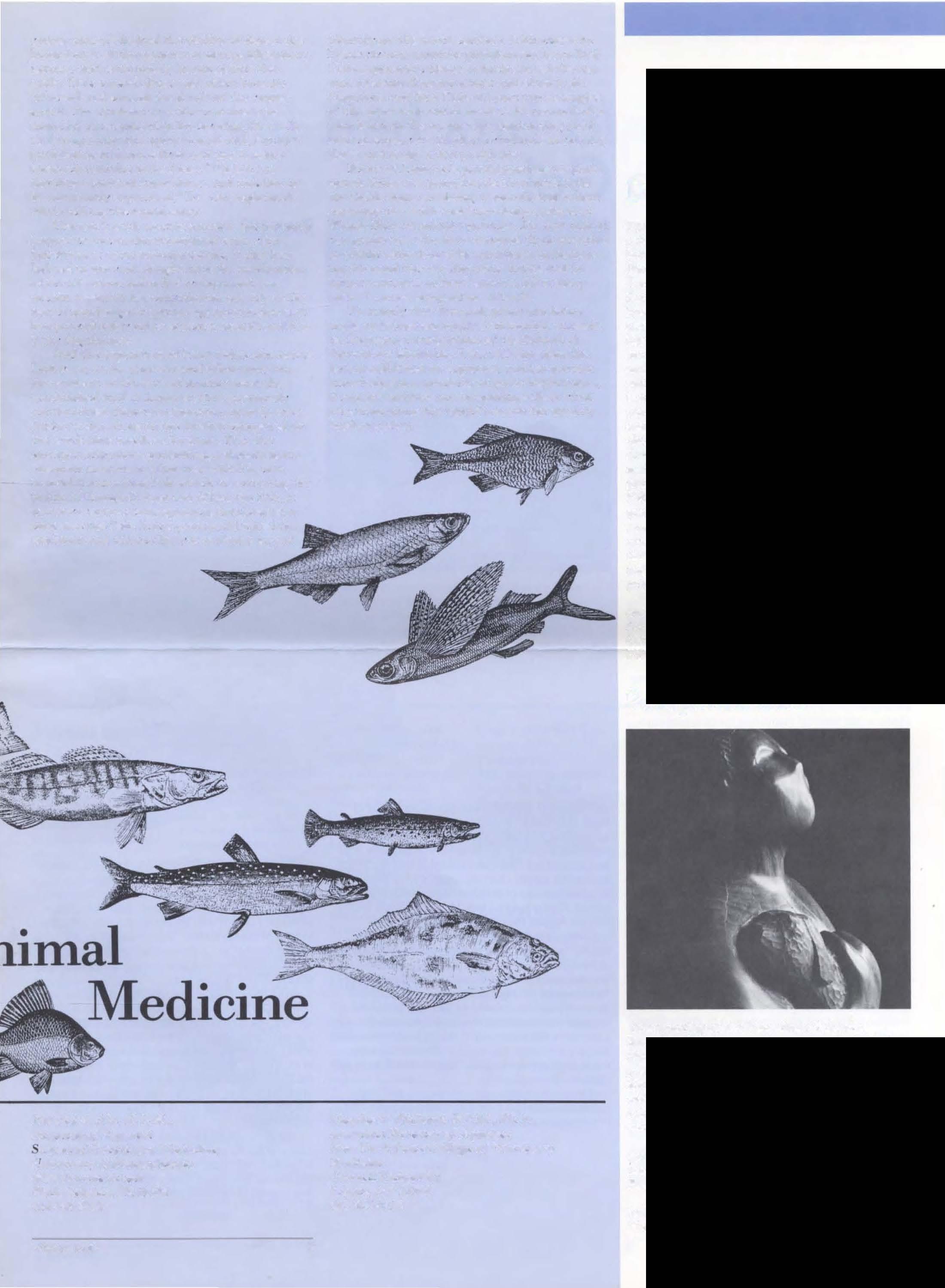
Open Wide Please
The School of Veterinary Medicine, in collabo· ration with the School of Dental Medicine, have inaugurated a new program of Veterinary Dental Medicine. Courses in Comparative Oral Form and Function and Comparative Oral Pathology and Treatment are being offered to familiarize students with the hard and soft tissues of the head and neck and with dental functions in different mammalian species. The courses provide information on the pathology and treatment of oral problems in humans and animals. In addition, a veterinary dental clinic is open at the Veterinary Hospital of the University of Pennsylvania (VHUP), staffed by members of both faculties. Students will have the opportunity to observe and practice basic dental care on both companion and exotic animals. A large animal dental service is being planned at New Bolton Center for a spring 1982 opening. The third component of the program is interdisciplinary research in dental medicine with an emphasis on technology transfer, development of new animal models for human disease, and improved understanding and treatment methods for animal oral problems.
Information abO'Ut the program may be obtained by contracting the Program Director, Dr. David Roberts, School of Dental Medicine, Clinical Research Center, 4001 Spruce St., Philadelphia, PA 19104.
Sculpture Gift
of Veterinary .\-ledicine.
L nil'er.�ity of Pt>nruylt·ania
Director ofAquat,et New York State College of J'eterinary Medicine Cornell Cnit,ersi
At a meeting of the Veterinary School's Board of Overseers on September 18, 1981, Dr. David E. Rogers, a new member of the Board, presented a striking wood sculpture to Dean Robert Marshak. Carved by Dr. Rogersfrom a solid block of buttonwood, it represents the relationship between man and his companion animals.
The sculpture, titled The Bond, may be seen in the reception area of the new Veteri· nary Hospital of the University of Pennsylvania.
Dr. Rogers is president of the Robert Wood Johnson Foundation and a former dean of the Medical School ofJohns Hopkins University
Donald A. Abt, D.J'.M., Director of Aquat•et . clwol
3800 Sprue£> Street Philadelphia, P.4 1910-J.
1982 9
2 I5·2·l3·5783 \\'inter
Charle� G. Rickard, D.V.M., PhD. Associate
ty Ithaca, IVY 14853 607-256-3215
98 Down, 2to Go!
This is a regularly appearing column, highlighting sequential events in our veterinary school's ninetyeight-year history. It is provided for your continuing education, as we approach our centennial which occurs in 1984.
History has a tendency to highlight dramatic incidents or eloquent statements and it often overlooks the less spectacular facts involved in the culmination of a particular event. For example, the American cowboy is an important contributor to the development of the West. In literature, song, and motion pictures he is depicted as a romantic figure when in reality he led a rather dreary, harsh life. Lincoln's Gettysburg Address was presented in such eloquent prose that we sometimes lose sight of the factthat it marked a very tragic period in this country's history.
In a way, this type of situation is true of the origin of the School of Veterinary Medicine. Most writings about the school speak of the role played by Dr. Benjamin Rush, an eminent physician and a faculty member of the Medical Department of the University of Pennsylvania. In 1807, Dr. Rush, at the invitation of the Philadelphia Society for Promoting Agriculture, spoke to a class of medical students on "The Duty and Advantages of Studying the Diseases of Domestic Animals and the Remedies Proper to Remove Them." Dr. Rush spoke of his desire to see "the veterinary science taught in our university," and of the advantages of physicians becoming more knowledgeable about animal diseases. He elaborated, in moving terms, about man's obligation to care for the animals that served him and about the need to develop a concept of "one medicine." From a philosophical and medical standpoint his comments presented a strong case for the development of veterinary medicine in the young country, but they actually had little to do with the eventual establishment of a veterinary department at the University of Pennsylvania. This is not to diminish the importance of Rush's remarks, but rather to place this piece of history in its proper perspective with regard to the creation of a veterinary school.
Dr. Rush's oration took place in 1807. A period of seventy-seven years was to elapse before the trustees of the University saw fit to create the veterinary department and it is doubtful whether, in making this decision, they were influenced by Dr. Rush's comments. In fact, the prime mover in bringing the trustees to a moment of decision was a farm manager named Horace Smith.
As befits the situation, Mr. Smith was an alumnus of the University and a Quaker by persuasion. After graduation, he developed what was apparently a good business dealing in the importation of china and glass. The Civil War provoked a business failure, and Mr. Smith enlisted in the Sanitary Commission, an organization that provided nursing service in field hospitals. The war experience drained his health and he turned to farming as a therapeutic measure. In the 1870s Mr. Smith was manager of a large horse farm in what is now West Philadelphia. His distress at the lack of competent veterinary service convinced him that the establishment of an educational system was needed for aspiring veterinarians. With this goal in mind, he began a voluminous correspondence with friends, politicians, physicians,
Rush 1807 vs Smith 1877
and leaders in agricultural organizations. One of those with whom he actively corresponded was Dr. James Law, Professor of Veterinary Science in the Agricultural College at Cornell University, and later first dean of the veterinary school at that institution. Most of Mr. Smith's correspondents were enthusiastic about the idea of establishing a veterinary school. Encouraged by this, Mr. Smith wrote to Dr. William Pepper, then Provost of the University, inquiring as to whether the trustees and medical faculty "would be likely to approve of having a chair of veterinary science established in connection with the University of Pennsylvania." On the evening of November 30, 1877 the medical faculty responded favorably to this idea, and on January 1. 1878 the trustees resolved that it would be "desirable to establish a Professorship of Veterinary Medicine and Surgery whenever a suitable endowment can be procured for this purpose." Mr. Smith's efforts had been successful!

The problem, then, was money and Mr. Smith turned his attention to raising funds, including the initiation of a subscription campaign. In this he was
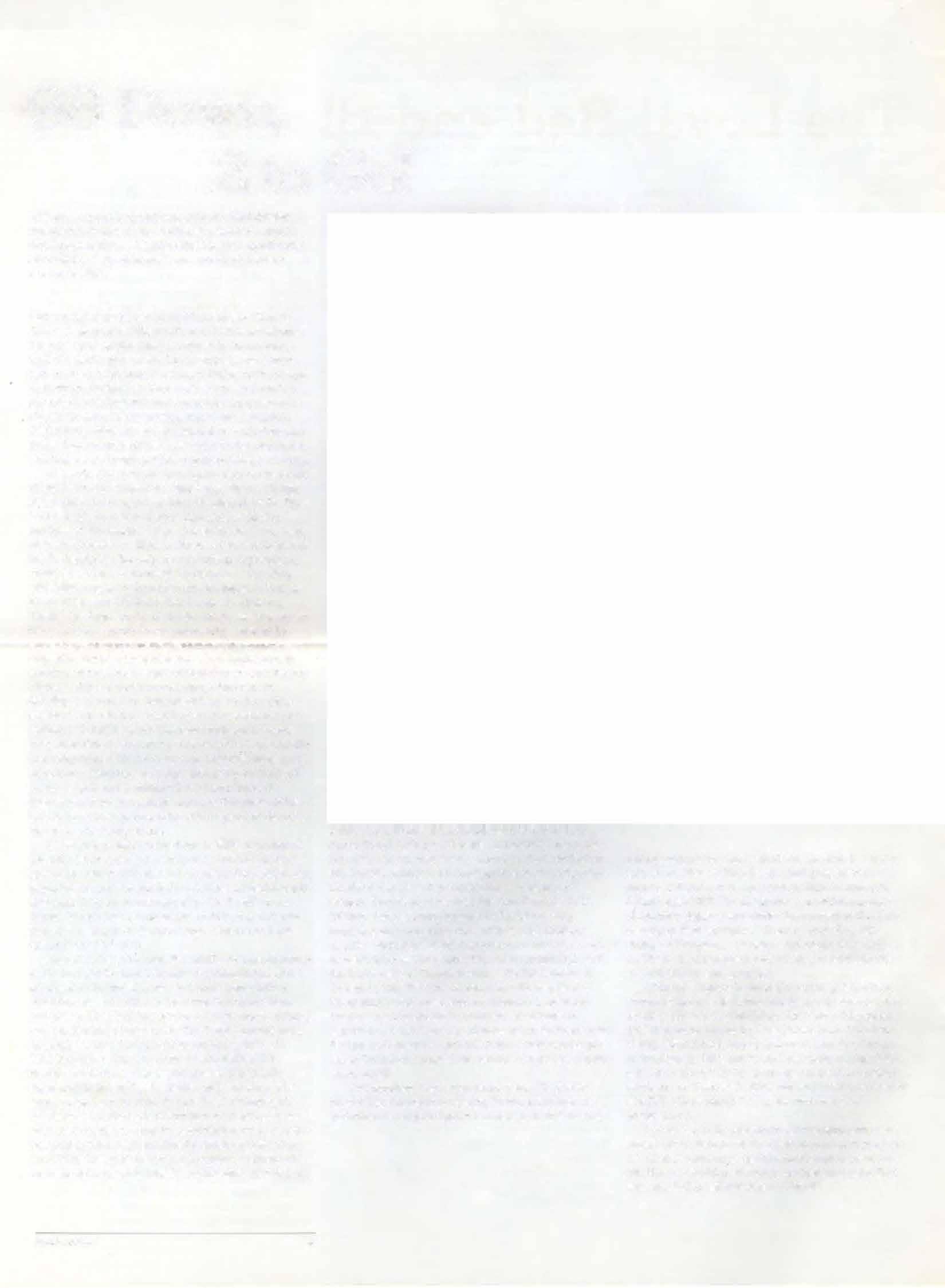
not so successful, but In 1882, Mr. Joshua B. Lippincott, a member of the trustees and president of a large publishing firm, announced that he was contributing $10,000 "for the purpose of establishing a Veterinary Department under the control of the University of Pennsylvania." Shortly after this, Mr. Joseph Gillingham, a trustee and owner of a large cattle farm, announced that he, too, would contribute $10,000 for this purpose.
With this money in hand the trustees approved construction of a building and began to search for a faculty. The original building stood on a triangular plot of ground bound by Pine Street (now Hamilton Walk), 36th Street. and Guardian Avenue (no longer in existence). This site is now occupied by the Medical Laboratories Building. lt was opened to receive students on October 2, 1884 and was built at a cost of $16,900. (More about this in the next issue of Bellwether.)
Let us retain Dr. Benjamin Rush's eloquent and imaginative statement as a part of our heritage, but let us also remember that it was the persistence of Mr. Horace Smith that finally ignited the spark that was needed to establish our school!
Bellwether 10
The Loyal Red and Bl e
Aside from its role as the tie that binds the graduates of this school, the Veterinary Medical Alumni Society is playing an increasingly acth•e role in the affairs of its Alma Mater. This comes through a mutual effort on the part of the society and the administration. A case in point is the participation of the president, Or. Cleve Brown, in the recent Faculty Educational Retreat. In developing the format for the retreat, the administration recognized the importance of having input from alumni on matters of teaching and curriculum. As various recommendations proposed at the retreat are implemented, the alumni will be called upon to advise the faculty on the educational program.
Our alumni are scattered over the United States and it is very often difficult to arrange for chool visits. So, the school has developed an outreach program by sponsoring hospitality suites at major professional meetings, where the dean and the president of the alumni society, or their designees, are present to talk with graduates and answer questions about current school affairs.
The formal bond between our body of graduates and the Veterinary School is the Executive Board of the Alumni Society. This group meets, at the school, every two months to discu1111aJumniaffairsandtoactinanad vi-
sory capacity to the administration. The president of the society prepares an annual report which provides alumni with a digest of business transacted at meetings of the Executive Board. The Executive Board consists of Dr. A. Cleveland Brown (V'59), president; Dr. Nancy 0. Brown (V'73), first vice president; Dr. Kenton S. Stokes (V'68), second vice president; and Dr. Josephine Deubler (V'38), secretary/historian. Or. Stokes serves as representative to the General Alumni Board and is chairman of the Liaison Committee. This committee meets annually for a two-day session in which all major activities of the school are surveyed. A report of this meeting is presented on Alumni Day. Dr. Loy Awkerman (V'52), is past president, and serves as representative for Organized Classes. Other committee chairman are: Or. Donald G. Lee (V'36), Alumni Annual Giving; Dr. Clifford F. Wright, Jr. (V'49), Ben· jamin Franklin Associates; Dr. Samuel F. Scheidy (V'29), Awards Committee; Dr. Bruce Schmucker (V'59), Continuing Education; Dr. Raymond W. Giulani (V'59), Membership; and Dr. John E. Martin (V'42), Publications. The Student Representative is Mr. Randy Ross, president of Student Government.
In addition to providing the school with valuable counsel, members of the Alumni Society have been generous in their financial
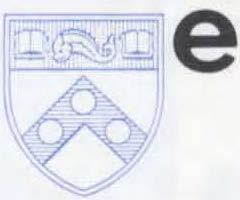
support. Alumni House, the dormitory· cafeteria complex at New Bolton Center, was constructed through alumni contributions. Each year, graduates respond to the Alumni Annual Giving Campaign in an enthusiastic fashion, and participaton in other major channels of support, such as the Benjamin Franklin Associates, is growing steadily. Funds contributed through these programs are unrestricted, enabling the school to purchase equipment and to carry out programs that cannot be supported with restricted funds. Unrestricted funds are a vital part of the school's annual budget.
The administration is grateful to the many individuals who take time from their busy lives to serve the school, and to the Veterinary Medical Alumni Society collectively for its support. We need the benefit of your counsel, and hope that you will always feel free to pass on your suggestions as to how we may better meet our missions in education, research, and service.
Ifyou have news to sfa.are with or about alumni, you may do so through this column by sending the information-typed, double· spaced-to Elizabeth Caulk, Alumni Affairs, U ofP School of Veterinary Medicine, 3906 Spruce Street, Philadelphia, PA 19104.
Animal Rescue ted. When the League Gives patient's condition is stabilized, it can be Gift to VHUP admitted to the The Animal Rescue Intensive Care Unit where twenty-four· League of Philadel- hour monitoring of phia has given $11,900 vital signs plus lifeto provide the Emer- support systems gency Service of maintain the patient. VHUP with an acute carecage and a defibrillator.
This will enable Clark Pavilion the Emergency Ser- Dedicated vice to give immediate oxygen therapy, On September 18, and provide proper 1981, Dean Robert M. temperature and Marshak and the humidity control-all Board of Overseers important in the dedicated the Eliza· treatment of critically beth Dunn Clark ill and injured ani- Ambulatory Pavilion mals. The defibrilla- in the Veterinary tor is used for cardiac Hospital of the Uni· arrest cases to "re- versity of Pennsyl- start the heart." vania. A plaque in the The Emergency pavilion records that Service never closes it was provided and is equipped to through the genero� provide life-saving ity of Mrs. Clark and procedures as soon as is in "recognition of an animal is admit· her dedicated humane interest in all animals."
Mrs. Clark, who tion, at the State Uni· resides at Springfield versity of New York, Farm, Middleburg, Farmingdale, NY. Virginia, is indeed a Also chairing was Dr. lover of animals. Lee Salk, Clinical Among her many Professor of Psycho I· interests, Mrs. Clark ogy in Psychiatry and maintains the largest Pediatrics at Cornell kennel of Labrador University Medical retrievers in the United Stales. The College. pavilion is in the publie area of the west wing on the first floor Meet the of the new hospital.

Board of Overseers
Dr. Kenneth W. Allen
Mrs. David Banks
Dr. A. Cleveland Brown
Roger Caras
Christine Connelly
John D. Cope
H. Richard Dietrich
Keith Eckel
The Honorable Penrose Hallowell
Max C. Hempt
John D. Hoffman
Philip Hofmann
John Hoyt
Dr. E. J. Kersting
Mrs. Gerard B. Lambert
Walter Mannheimer
Henry S. McNeil, I r.
J, Maxwell Moran
Outreach
The following individuals comprise the On December 5, 1981 Board of Overseers of Dean Robert M. Mar· the School of Veteri· shak co-chaired a nary Medicine. symposium titled "Animal Kind: Com· In subsequent issues panion Animals of Bellwether we will Today." The sympo· describe the function sium was sponsored and activities of the by Bide-A-Wee and Board of Overseers. the New York State Humane Association in cooperation with the Latham Founda-
Vincent B. Murphy, Jr.
Richard W. Newpher
Charles Ord
Mrs. William D.
Patterson
Mrs. Joan Ferguson Pew
Mrs. David Rockefeller
Dr. David E. Rogers
Dean Samuel H. Smith
W. B. Dixon Stroud
Robert Whittaker
Robert Williams
Charles E. Wismer, Jr.
Charles Wolf
Winter 1982 11
Heartworm infestation in dogs was described in 1856 by Joseph Leidy before the Academy of Natural Sciences in Philadelphia. It was not until 1955 that the life cycle was completely documented. The next year it was shown that two different microfilariae may be found in the circulating blood-the one produced by the heartworm Dirofilaria immitis and the other by a harmless subcutaneous parasite Dipetalonema reconditum.
Except in the colder climate, year-round treatment may be recommended. Consult your veterinarian.
What is an Emergency? The Emergency Service at the Veterinary Hospital of the University of Pennsylvania is open twenty-four hours a day, every day of the year. There seems to be a tendency to use this service for convenience rather than because attention is urgently needed.
A true emergency arises when any small animal is injured or so ill that unless immediate therapy is instituted, irreversible bodily damage or death will result. Problems requiring prompt attention include
Pet vs. Show Quality. A number of people ask, "What is the difference between a pet and a show dog?" The question usually comes up after a visit to a breeder to see a litter of puppies.
Reputable breeders follow planned programs, using the best specimens available. They make every effort to eliminate hereditary and other undesirable faults. It's an educated guess as to whether or not a puppy will become a show dog. Usually the only difference between a puppy described as "pet quality" and one considered a "show prospect" is the opinion of the person who has graded the litter. Unless there are malformations or disqualifying faults, the difference may never be noticed except by one familiar with the breed.
alMost people with show dogs resent a reference to "your pet." The males are dogs and the females are bitches. This is a question of semantics with some snobbery thrown in.
If you are considering a show career for your puppy, the American Kennel Club's breed standard is your guide. In addition to faults which disqualify any breed (blind, deaf, lame, castrated, spayed. or not
Blood-sucking mosquitoes capable of transmitting heartworms are present in almost every part of the United States and Southern Canada, so the problem no longer is restricted to the southern coastal states. Heartworm disease has become a nationwide problem.
Adult worms can live nearly five years in the heart and pulmonary arteries. Dog owners and veterinarians are usually aware of the potential problem and the emphasis has been on early diagnosis. Often infection is diagnosed before clinical signs appear. Generally, coughing is the first sign noticed.
The adult worms produce microfilariae which are noninfective until they have been ingested by a mosquito. It may take up to a month in the mosquito before the microfilariae will infect a dog which is bitten. It can be another six months before microfilariae can be detected in the blood.

Finding microfilariae in the blood has been the usual method of detecting heartworm infection. There have been false negative results for various reasons. The adults may be of the same sex or adult worms may not be producing microfilariae for several reasons including an immune response.
For some time, an indirect fluorescent antibody (IFA) test has been used for measuring antibodies against microfilariae to detect cases where the microfilariae do not circulate in the blood because of an immune response directed against them. A new serologic test, and enzyme-linked immunosorbent assay (ELISA), using purified adult heartworm antigens, has been developed at the University of Pennsylvania School of Veterinary Medicine. This assay has been accurate in detecting infections with immature worms. as well as those cases where there are adults in the heart and pulmonary vessels but no circulating microfilariae. ln addition, this test does not give false positive results when the dogs are infected with intestinal parasites.
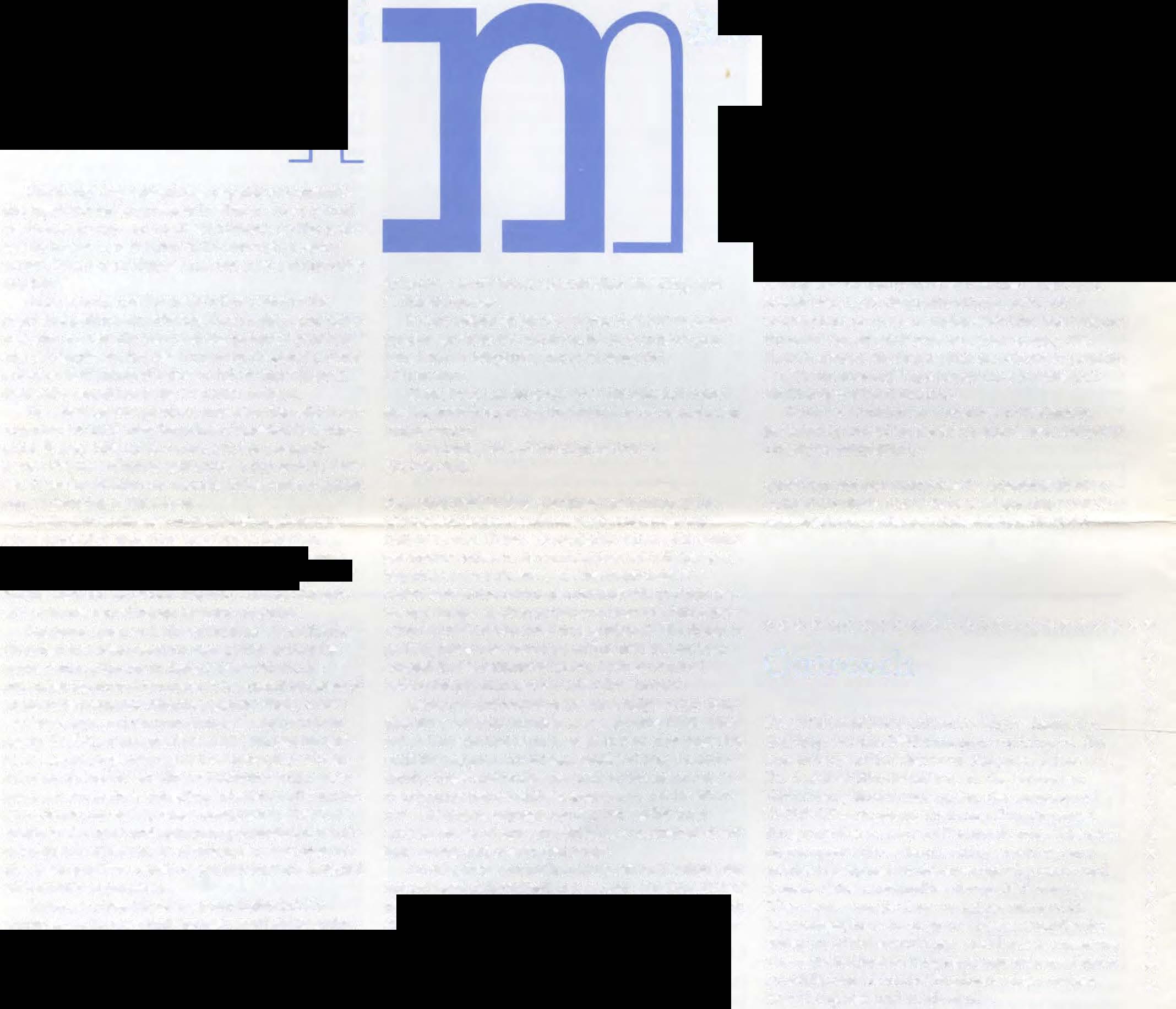

There are other blood tests available but it's important to be sure that the test used has been thoroughly investigated and criteria for a positive report have been established.
Dog breeders are aware of the importance of avoiding treatment with various drugs when adult heartworms are present. These include several products highly effective against intestinal parasites, as well as the drug diethylcarbamazine used to prevent heartworm infection. It is known that severe reactions may occur in heartworm-infected dogs. The new ELISA test will be an excellent way to document infection if there is a question about the routine check for microfilariae.
A word of warning: if your dog is on a preventive program, daily dosage is a must, don't skip a day
Crackers
collapse, convulsions, uncontrolled bleeding, and accident injuries.
If your veterinarian refers you to VHUP because special services are required, be sure to have your veterinarian telephone and give essential information.
Often, help can be given over the telephone and arrangements made for the animal to be seen during regular hours.
The number to call for information is 215-243-4685.
Parvovlrus Update. New vaccines containing a live, attenuated canine parvovirus are now available commercially. These are available either with canine parvovirus alone or in combination with distemper, hepatitis, parainfluenza, and leptospirosis. It is believed that the canine parvovirus will provide better and longer-lasting protection than the feline parvovirus used in vaccines first produced. The delay in getting these new vaccines on the market has been caused by the extensive safety testing required before the product can be federally licensed.
Maternal antibodies in the milk help protect puppies for a variable number of weeks after birth. This protection can last from a week or two after weaning until the puppies are sixteen weeks of age. Unfortunately, these antibodies neutralize vaccine virus, so vaccination before sixteen weeks may not be effective. Therefore, puppies vaccinated earlier than sixteen weeks of age, should be re-vaccinated at sixteen weeks and yearly thereafter.
An effective vaccination program for kennels has not yet been determined. ln a kennel situation, it may be necessary to vaccinate puppies weekly beginning at six weeks of age and continuing up to sixteen weeks. The new canine-origin vaccine is recommended for all ages.
For show dogs, we still recommend "boosters" with the modified live canine vaccine every six months.
Vaccination against canine distemper, hepatitis, parainfluenza, and leptospirosis must not be forgotten for puppies, household pets, and show dogs. This should be done yearly for all dogs.
having two normally-located testicles). individual breeds may have disqualifications such as the wrong color. an over- or under-shot bite, too large or too small (as an adult over one year of age). etc. There's always the chance that an extremely promising "show prospect" as a puppy may become just another dog after it matures.
If you are looking for a member of the family. personality should be the first requirement. followed closely by adaptability.
Send your pet care questions to Josephine Deubler. Animal Crackers. U of P School of Veterinary Medicine,3800SpruceStreet,Philadelphia,PA19104.
Outreach
Five Philadelphia minority high school students spent the 1981 summer working in the laboratory of Dr. Bernard Shapiro, Associate Profesor of Biochemistry in the School of Veterinary Medicine, under the auspices of STEP-UP-Student Training Employment Program-University of Penns)lvania. The students spent three hours daily working on a project designed to determine why male and female mice metabolize drugs differently. They were taught how to inject mice with hormones, how to prepare tissue samples by using an ultra centrifuge, and how to measure the metabolism of lagged drugs using a liquid scintillation counter. Students also studied basic English and math skills.
Dr. Shapiro reports that the students enjoyed the laboratory atmosphere and that " while we worked them pretty hard, no one complained." Dr. Adelaide Delluva, Professor of Biochemistry, viewed the exercise as one which demonstrated that ..if you give a person something productive to do, they really put their minds to it."
STEP-UP is sponsored at the University by Dr. Janis Somerville, Vice Provost for Student Life and Dr. Louise Shoemaker, Dean of the Graduate School of Social Work.
• 1
Bellwether 12
• •••••••••• •••••••••••••
• • • • • • • • • • • • • • • • • • • • • •
Peanuts. Popcorn. Chewing Gum. Candy, and Advice
Nostalgia
For many graduates between the years 1912 and 1954 the phrase "over there," uttered in a soft, guttural tone and accompanied by a haphazard wave of an arm attached to a hand holding a cigar, conjures memories of only one person-Or. Frank E. Lentz. "Over there," was Dr. Lentz' stock phrase in reply to any student who had the temerity to inquire as to the location of one of the several hundred drugs then stocked in the pharmacy. Most of us give directions by pointing to the vicinity in which an object is located. With Dr. Frank the wave of the arm-usually from the elbow down-could mean north, south, east. west, or even up or down. At that time,the pharmacy had ceiling-high cabinets equipped with a sliding ladder. Therefore, the student. who wanted something from Frank's endless supplies, was on his own because Dr. Lentz seldom deigned to do any searching himself.
The room was called the Pharmacy but it served many other functions. In one closet there was a stock of candy, chewing gum. cigarettes, cigars, and sundry of other items. This was, of course, a selfserve closet in which there was a box for receiving payment for items taken. In addition to the lure of the "goodies closet" the pharmacy was the source of all sorts of information, and also served as the social center of the school
At an early stage in his career, Dr. Lentz was recognized as an astute businessman. Students and faculty often sought his advice on such nonacademicmattersasmortgages,automobile purchases, the strength of the stock market, and the advantages of savings and loan associations. More than this, many senior students looked to Dr. Frank as the best source of information on operating a practice.

Junior students were assigned to pharmacy duty on a rotating basis, and this duty involved many things. Amid the aromatic odors of camphor and the repugnant smell of sulfur, students would concoct the many remedies then in vogue. This included filling thousands of one-ounce gelatin capsules with
kaolin and pectin (for diarrhea), mixing cough remedies containing guaiacol and wild cherry syrup, or preparing tincture of iodine or Lugol's solution. This was before the advent of antibiotics and sulfonamides and dogs suffering from horrendous cases of pneumonia were treated with a foul mixture known as C.C.C. (camphor, cod liver oil, and creosote). This was also the day of the famous novoxil, a silver compound with a shiny black cast, which was the last word for treating diarrhea.
Not all of the students' time was occupied in pharmaceutical duties. There were frequent trips to the pharmacy annex, a house on Pine Street where drugs were stored. On at least one occasion the pharmacy duty involved some pyrotechnics.
A daily visitor to the pharmacy was Dr. Henry C. (Harry) Campbell, Professor of Bacteriology, and like Dr. Lentz, a sharp businessman. Most mornings the two doctors would discourse on the world's financial situation. One spring morning Dr. Lentz gazed out the window on Thirty-Ninth Street and observed that there was a parking space near the archway of the school. Knowing that Dr. Campbell would soon arrive, Dr. Frank directed a student to gather up some wooden crates and build a substantial bonfire in the parking space so that his friend would have a reserved spot!
If all of this is taken to indicate that Dr. Frank Lentz was a "character," and indeed he was. be it known, then, that he was a loveable character.
Holding the Tiger by the Tail
An animal trainer, when asked how he handled a cage full of tigers, answered, "Very carefully." The same is true about a facult}'s approach to changes in teaching methods and the curriculum.
In 1970 the facuh} of the chool of Veterinary Medicine took a revolutionary step in \elerinary medical education by breaking awa} from the traditional lock- tep type of curriculum and instituting a rore-elcctive curriculum. This pro\ Cd to be a highly effective change-one that haH been emulated, in part, by a number of other school·. However, after twelve )Cars, during which there was much piecemeal discussion, it became obvious that
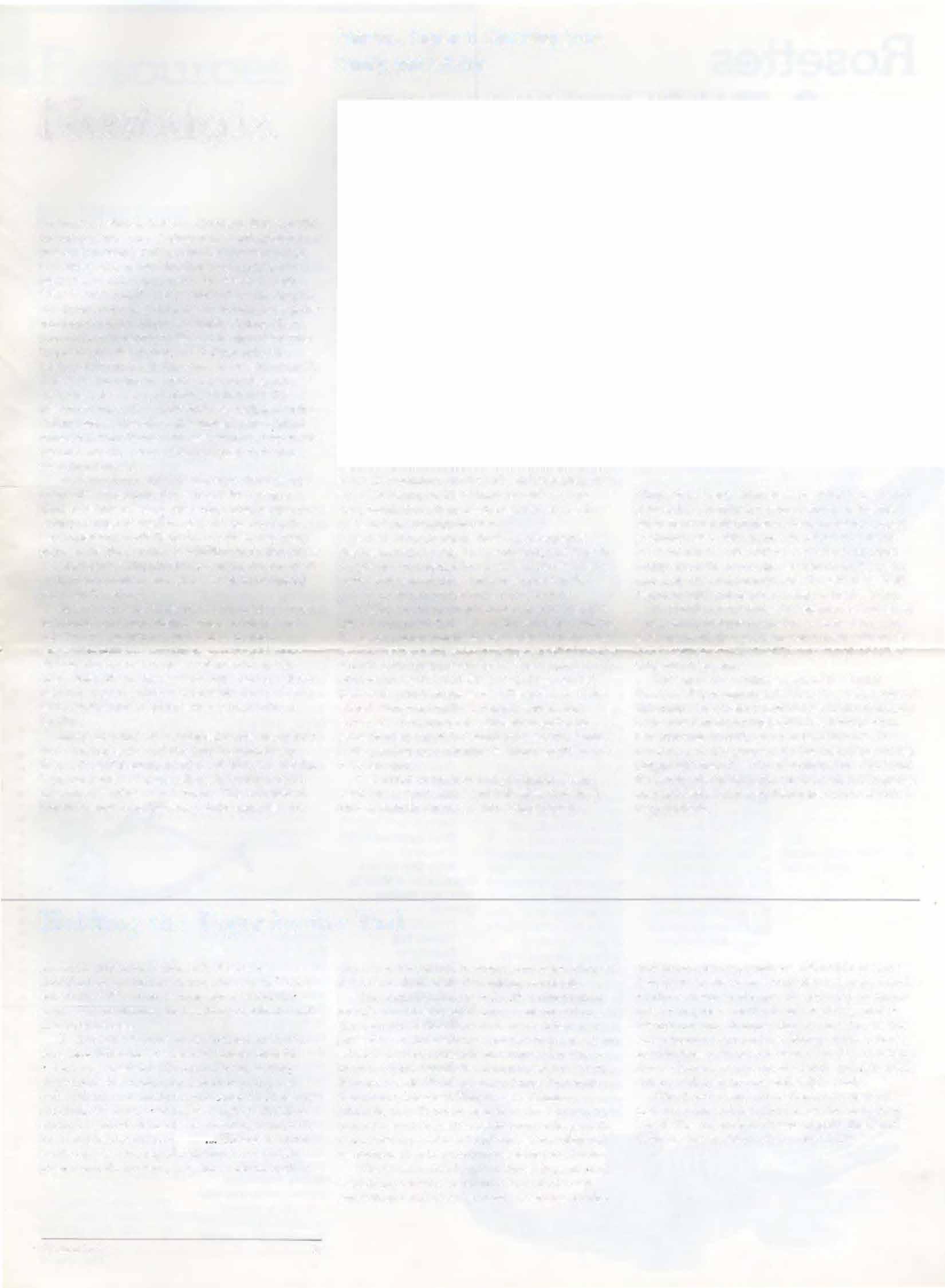
there waH a need for in-depth consideration of the curriculum and of teaching methods.

Through October 9 to 11, 1981 about sixty members of the faculty convened for a threeda} retreat at ew Bolton Center. The) were joined by eight students and 11everal experts on education from other institutions. Dr. Cleve Brown represented the alumni and Dr. Wayne Mountain, the Pennsylvania State Board of Veterinary Medical Examiners. Thomas Ehrlich, new Provost, spoke of the University's commitment to seek ways of more adequately recognizing good teaching and of developing techniques for improving teaching methods.
Those assembled, spent three days of outsearching activity in twenty-four different workshops and three plenary sessions. At the
Although Dr. Lentz, himself, never talked about such affairs, it is a fact that he was a source of financial aid to many needy students. Also, numerous young graduates were able to start practices with drugs and instruments obtained on credit from the good doctor. In addition to academic functions. Dr. Lentz operated a retail drug business. He earned his VMD degree in 1907 and also had a degree in pharmacy.
Dr. Frank Lentz is �ndeed a legend of a time when bureaucracy had not yet become a way of life, and when many of life's problems were dealt with on an individual basis rather than through a complicated, impersonal agency.
A plaque in the cafeteria area of the Alumni House at NBC recognizes Dr. Lentz as a benefactor of the school. The Frank E. and Harriet Lentz pharmacy in the new Veterinary Hospital of the University of Pennsylvania (VHUP), was provided through the generosity of the Lentz family. The inscription on the plaque best describes the roles played by Frank and his lovely wife in the history of this school: "Together they befriended and sustained generations of veterinary students."
end it wa obvious that considerable progress had been made in meeting the two major goals of the retreat: to elevate the priority of teaching, to improve methods of teaching, and to determine the changes that are needed in the core-elective curriculum. Many of the recommendations will now be translated into action. Some changes can be made fairly quickly while others will require considerable study.
The faculty and all of those who participated in this noble effort arc to be congratulated. The tigers have been approached and they are being dealt with-carefully.
Winter 1982 13
Rosettes &Ribbons
The International Conference on the Human/Companion Animal Bond, held on October 5-7, 1981, was a huge success. Our congratulations to Drs. Aaron Katcher and Alan Beck and their colleagues for the arrangement of an imaginative conference at which much factual scientific information was presented on the rapidly developing field of man/animal relationships. Over 475 attended the workshops and formal sessions.
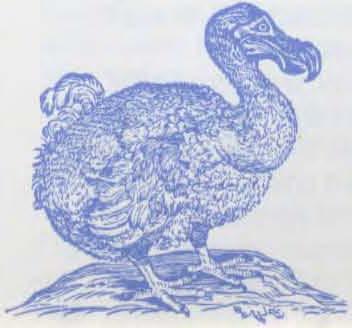
On November 15, 1981 Dean Robert Marshak and the Kling Partnership (an architectural engineering/interior design firm) were hosts to several hundred guests who celebrated the tenth anniversary of the Alarik Myrin Memorial Research Building at New Bolton Center.
"The Myrin Research Building has housed us well for a decade," said Dean Marshak, "and we are counting upon it for decades more. It continues to serve the purposes for which it was designed, and this is a good opportunity to thank the people who made the building possible." Happy Anniversary!
Dr. Richard McFeely, Associate Dean and Director of New Bolton Center, was named President of the Pennsylvania Veterinary Medical Association.
Dr. McFeely also serves as President of the American College of Theriogenology.
Dr. William Donawick has been named to the newly-created Mark Whittier and Lila Griswold Allam Professorship. The chair was created with a gift from Mrs. J. Maxwell Moran and honors Dr. Mark W. Allam. former dean and Emeritus Professor of Surgery and Mrs. Allam. In creating the chair Mrs. Moran stated, "This chair permits me to express my long admiration forthe
Congratulations to the following individuals who were elected student officers:
First-Year Class
President:
Felix Vega Vice President:
Carla Drozdowicz
Secretary
Treasurer:
Julie Block
Second-Year Class
President:
Stephen People
Vice President: Jim Reed
SecretaryTreasurer:
Barbara Davis

Third-Year Class President:
Rodney Boden
Vice President:
Andrea Pesut
Secretary
Treasurer:
Tim Marqueen
Fourth-Year Class
work of Dr. Allam. It is through his efforts that the Veterinary School has grown to its current prominence and New Bolton Center has become a reality."
Dr. Donawick is Professor of Surgery and currently involved in basic research on colic in horses. He formerly conducted pioneering work on heart transplantation.
Many of you will be interested to know that on August 10, 1980 a 260-acre tract of land in Denbigh, Ontario, Canada was dedicated as a nature preserve in memory of
President:
Tony DeCarlo
Vice President:
Anna Edling
SecretaryTreasurer:
Barbara Dymond
Student Government President:
Randall Ross
Vice President:
John Pantalo
Secretary:
Sheri Bakerlan
Treasurer:
Betsy Dayreii-Hart
Organization of Minority Veterinary Medical Students

President:
Thomas Eng
SecretaryTreasurer:
Felix Vega
3rd-Year
Dr. Robert S. Brodey. beloved Professor of Veterinary Surgery and Dr. Anna N. Hatton. Both died in an automobile accident near Denbigh just one year prior to the ��, dedication.
Representative:
Nolton Pattio
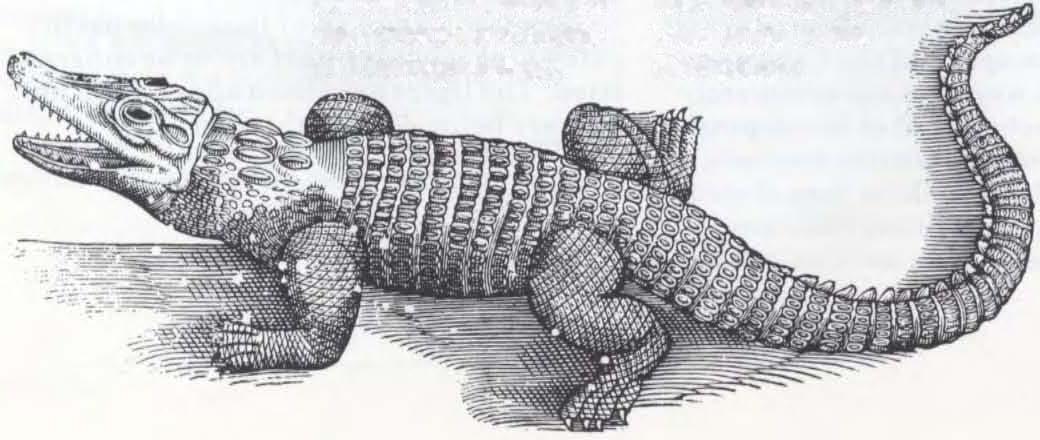
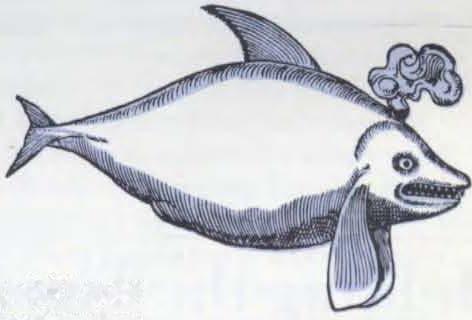
2nd-Year
Representative: Joseph Scott
1st-Year
Representative: Susan M. Prattis
SCAVMA Officers
President: Jim Stoltz
Vice President: Alan Glassman
Co-Secretaries:
Susan Large and Jill Bailey
Co-Treasurers: Bonnie Brock and Holly Leather
Faculty Advisors:
Drs. E. Hammel and D. Kowalczyk
HOD Delegates:

Nollon Pattlo and Jim Lunig
Student Wildlife Organization
President: Bruce Herwald
Faculty Adviser: Dr. W. Medway
American Association of Bovine Practitioners
President: Ken Birchard
Oops! We are sorry. In our last issue of Bellwether we omitted the appointment of Dr. David Freeman as Assistant Professor of Surgery on July 1. 1981.

Received too late for pubolication in our last issue-Or. John McCoy (V'40) Professor of Comparative Pathology and Director of the Vivarium, Rutgers University received the 34th A.V.M.A. award during the annual meeting of the association in July 1981. This award is given in recognition of distinguished contributions to the advancement of veterinary medical organizations.
Dr. Mary Anne Della-Fera was awarded the Donald B. Lindsley Prize In BehavIoral Neuroscience for recognition of excellence of a Ph.D. thesis. Dr. Della-Fera (V'79) holds an NIH Postdoctoral Fellowship in the Department of Clinical Sttrdl-e---at New Bolton Center, and received a Ph.D. in Anatomy in 1980. Dr. Della-Fera's thesis is entitled "Proposed Roles for Central Nervous System Cholecystokinan in the Control of Food Intake."
November 6, 1981 was designated as Boucher Day in honor of Dr. William Boucher, Professor of Medicine, who retired on December 31 after forty-one years of faculty service. During the day papers were presented at New Bolton Center on various aspects of diseases of farm animals. In the evening over 450 attended a buffet to do honorto this outstanding individual and his family. Following dinner numerous individuals recounted personal experiences involving Dr. Boucher.
Dr. Carl E. Aronson. Associate Professor of Pharmacology and head of Laboratories of Pharmacology and Toxicology was elected as President of the American Academy of Veterinary Pharmacology and Therapeutics at the Annual Meeting of the Academy on July 19, 1981.
Resources

New Bolton Center
New Bolton Center is the rural campus for the University of Pennsylvania's School of Veterinary Medicine, located in southern Chester County, near Kennett Square, Pennsylvania. The center operates a large Animal Hospital which contains various specialty sections including Anesthesia, Clinical laboratory Medicine, Medicine. Microbiology, Nutntion. Pathology, Radiology, Reproduction, and Surgery.
General Services
The large Animal Hospital can accommodate ninety patients and has a six-stall isolation unit for the treatment of infectious disease cases. The hospital is open from 9 a.m. to 5 p.m. and 24 hours-a-day for emergencies. Arrangements for hospitalization or emergency services can be made by calling: (215) 444-5800. In-patient and out-patient referrals should be directed to specific sections by calling: Medicine-(215) 444-4281 or Surgery-444-3200.
The Equine Out-Patient Clinic is open Monday to Friday from 9 a.m. to 5 p.m. and accepts patients for examination without prior referral. Call Dr. William Moyer, (215) 444-5800, ext. 405 or 406.
The hospital also operates a Field Service which provides routine health care and emergency service for farm animals and horses in the surrounding community. Call (215) 444-0900
�aclaUv Services
Heart Station
Clinic days: Tuesday and Wednesday, 9 a.m. to 5 p m. Services include cardiac consultation, electrocardiograms, phonocardiograms, echocardiograms. and cardiac catheterization. Complete work-ups for poor racing performance can also be executed, including respiratory evaluation, submaximal exercise testing, endocrine evaluations. endoscopy, cardiology, and lameness evaluations. Work-ups can be scheduled for other days. Call (215) 444-5800, ext. 359.
Nutrition
Nutritional services, for the livestock industry, are offered in cooperation with referring practitioners or the New Bolton Center Field Service. Call (215) 4445800, ext. 316.
Ophthalmology
Ophthalmology cases may be scheduled through Drs. Beech or RapheI; call (215) 444-4281.
Radiology
Radiology, Monday-Friday, 9 a.m. to 5 p.m. Only referral cases accepted. Provides x-ray therapy and other radiological services. Call (215) 444-5800, ext. 198.
Reproduction
Fertility Clmic: Tuesdays, 9 a.m. to 5 p.m The Georgia and Philip Hofmann Research Center for Animal
Reproduction provides fertility evaluations for stallions, mares, and other large animals. Call (215) 444-5800, ext. 220.
Other services to the clinician include: case consultation, uterine biopsy service, pregnancy blood tests, and uterine and cervical cultures. Call the Section of Reproductive Studies at (215) 444-5800, ext. 220.
Endocrine Laboratory
Assays and consultation on reproductive, thyroid, and adrenal hormones. Call Or. Marolo Garcia, (215) 444-5800, ext. 202.
Cytogenettcs Laboratory
Chromosome analysis. Call Ms. lynne Kressly, (215) 444-5800, exts. 204 or 110.

Winter
January
February
6
University of Pennsylvania Pre-Vat Club/ Invitational Day at New Bolton Center
27-28
Penn Annual Conference/ Hilton Hotel of Philadelphia, 34th & Civic Center Boulevard, Philadelphia
10
Practical Issues Raised by Veterinarians Concerning Owner Reaction to Pat loss or Bereavement/ University of Pennsylvania, Faculty Club, Philadelphia, 9:00 am - 5:00 pm
24
Surgical Approaches to the Bones and Joints of Oogs/ School of Veterinary Medicine, Philadelphia, 9:00 am - 5:00 pm
March
American Farrier's Association SeminarI New Bolton Center
12
Current Trends In Bovine Nutrition/New Bolton Center. 8:30 am - 5:30 pm
30
Canine Symposium for Owners and Breeders/University Museum, Harrison Auditorium, 33rd and South Streets, Philadelphia, 9:00 am -5:00 pm
15
Western States Conference/ Alumni Reception, las Vegas, NV
April
7
An Overview of Veterinary Hospital Management and Administration/ U niversity of Pennsylvania, Faculty Club, Philadelphia, 9:00 am -5:00 pm
24
Equine Lameness SeminarI New Bolton Center, 9:00 am -9:00 pm
17
Emergency Medicine & Surgery for the Practitioner I University of Pennsylvania, Faculty Club, Philadelphia, 9:00 am - 5:00 pm
17
Open House/New Bolton Center

24-30
Spring SCAVMA Picnic/ New Bolton Center
AAHA Meeting/ las Vegas, NV
27
Feline Symposium for Owners and Breeders/ versity Museum, Rainey Auditorium, 33rd and South Streets. Philadelphia, 9:00 am -5:00 pm
22
UpJohn Senior Dinner/New Bolton Center
For information on Continuing Education courses. contact Elizabeth Caulk, (215) 243-4234.
1982 15
---- - • - - -.. ......-::::- ,.. -=-... � --�·--
More Resources
Diagnostic Services
The Clinical Microbiology Laboratory, in the Murphy Laboratory Building, has a number of diagnostic services for the practitioner: isolation and identification of aerobes. fungi, Salmonella, CEM (not for export purposes) organisms; microbiological evaluation of environmental, surgical and postmortem specimens; mastitis specimens; antimicrobial susceptibility testing, direct gram stains; acid-fast and KOH (fungal) stains; preparation of bacterins. and certified EIA (Coggins) testing. Specimens should be sent directly to Microbiology, c/o Mursphy Laboratories. New Bolton Center. For general informat1on call (215) 444-5800, ext. 155, or for specimen and special handling procedures. exts. 156, 157, or 159.
Clinical Laboratory Medicine provides routine hematologic, urine, and fecal analysis Profile studIes (12 separate assays) are available at reduced charges. A limited number of tests are available during evening and weekend hours. For a detailed listing of tests, fee schedule. and preferred collection system, call (215) 444-5800, ext. 250. The Laboratory of Large Animal Pathology offers necropsy and biopsy services. Biopsies should be mailed to the laboratory. Animals for necropsy must be accepted by the duty pathologist. Call (215) 444-5800, ext. 211.
Bellwether
University of Pennsylvania
School of Veterinary Medicine
3800 Spruce Street
Philadelphia, PA 19104
Poultry Diagnostic Laboratory: Monday-Friday, 8:30 a.m. to 4:30 p.m. This is a University-state cooperative laboratory, providing diagnostic and consultation services for poultry, game birds, and pet birds in the following areas: serology, bacteriology, virology, and pathology Farm visits may be arranged. Call (215) 444-4282.
Diagnostic Assistance For Herd Problems. Clinicians are available to assist and/or consult with referring veterinarians in the evaluation of difficult or unusual problems. For information, call Dr. Robert Whitlock. (215) 444-5800, ext. 321
Auxiliary Services
The Large Animal Hospital has, on call, certain specialty services at the Philadelphia campus. such as neurology and dermatology. Investigators m research units at New Bolton Center, such as the Comparative Leukemia Studies Unit, are also available for consultation. For information call (215) 444-5800.
New Bolton Center
382 West Street Road
Kennett Square, PA 19348
Veterinary Hosp ital of the Un iversity of Pennsylvania
Soft Tissue Surgery: Clinic days have been expanded to Monday-Thursday.
The Behav1or Clinic can now be reached for discussion of behavior problems and appointments during the following hours: Monday and Wednesday, noon to 2 p.m.; Thursday and Friday, 1 p.m -2 p m.; and every day except Wednesday, 4 p.m.-5 p.m .• (215) 243-4525.
Wildlife Service offers veterinary care for wildlife and unowned animals such as pigeons. hawks, owls. squirrels. rabbits. and groundhogs found abandoned and in need of veterinary care. During regular hours call (215) 243-4680 or 243-4685. For information, contact Dr. William Medway, 243-7891.
Parasitology Laboratory offers the ELISA serology to detect heartworm in dogs ($10). Contact Dr. Robert Grieve, (215) 243-5646.
Virus DiagnostiC Laboratory offers feline and canine virus diagnostic tests. Call (215) 243-3161.
Non-Profit Organization US Postage PAID Philadelphia, PA Permit No 2147


Address correction requested

























































